Hello! My name is Jeffrey (Jingyuan) Li. To see my posts, click on any links below, or just keep scrolling.
Studio II
ACTIONS from Studio I
Studio II
ACTIONS from Studio I

Based on primary, exploratory interviews with professionals and secondary resources that present how play therapies are delivered remotely in 2020-2021, I learned more about both the gighlights and difficulties of tele-play.
In this project, I summarized the findings with storyboards protraying a variety of exisiting play scenarios and methods, following with a map illustrating their properties and strengths. After that, I drew out storyboards of proposed models of remote play and made one into a prototype.
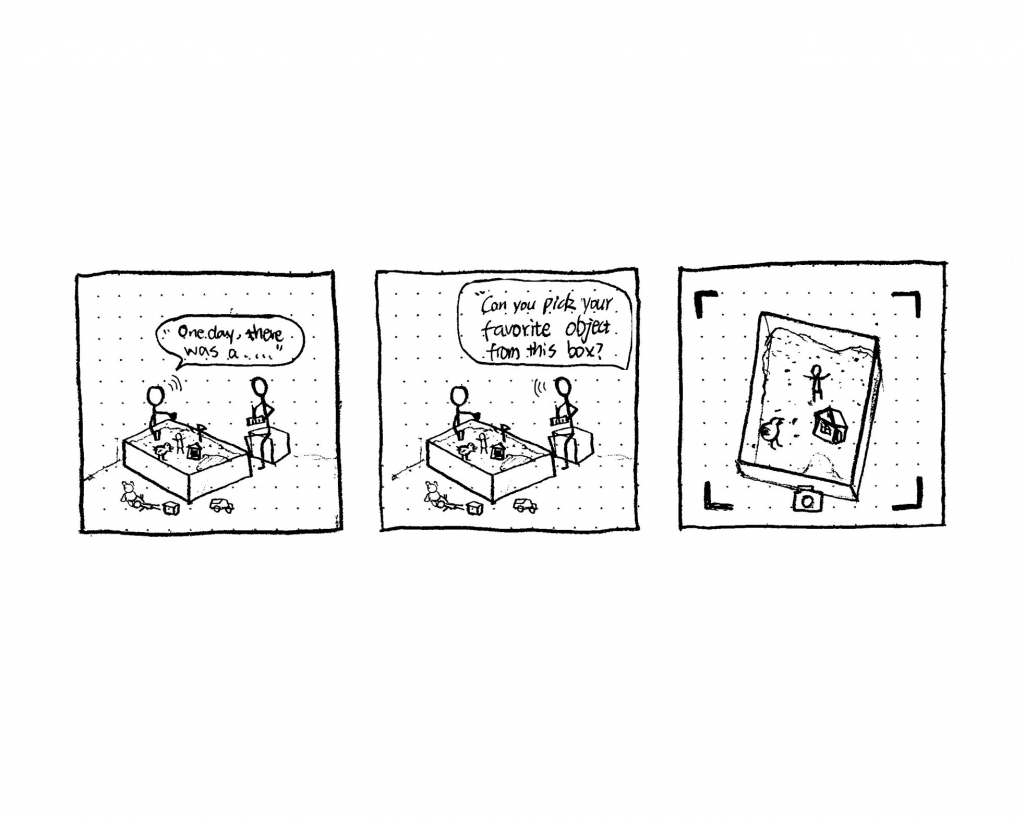
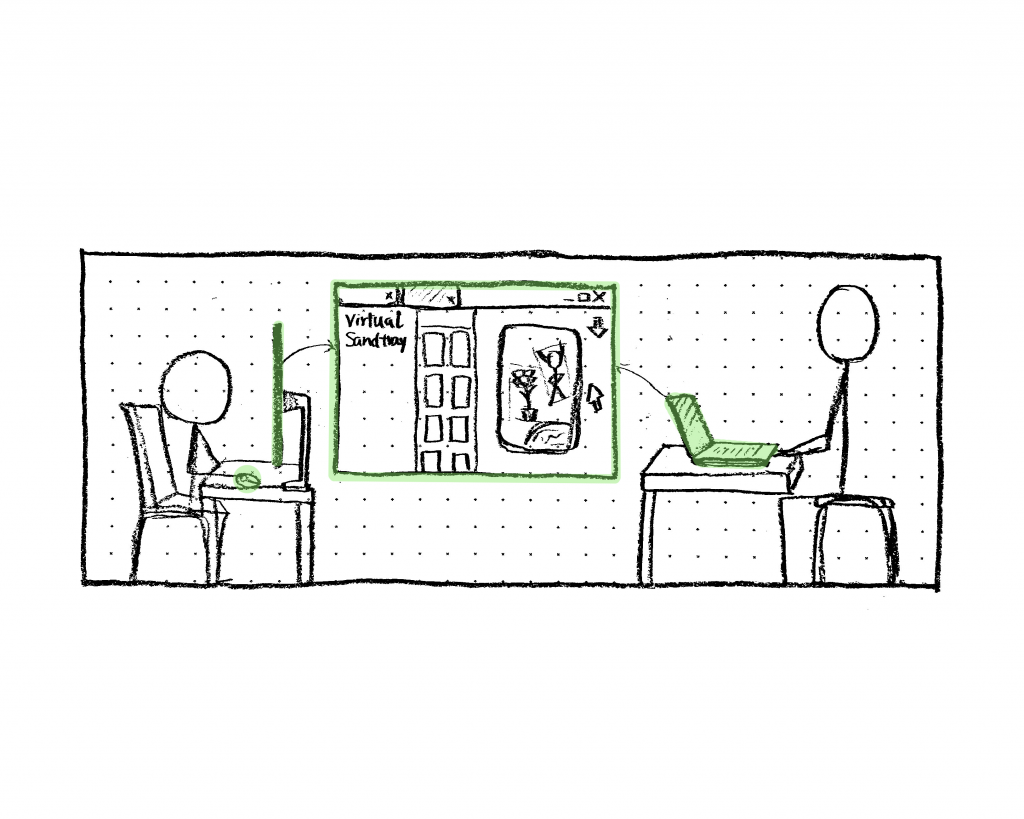
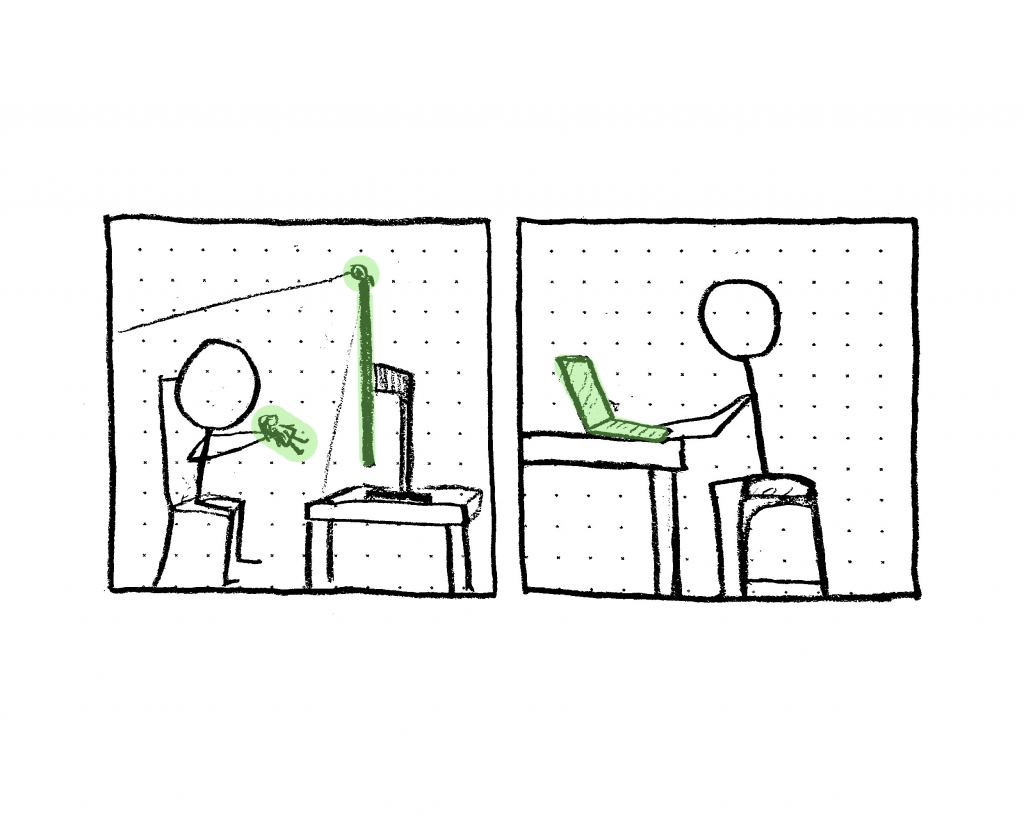
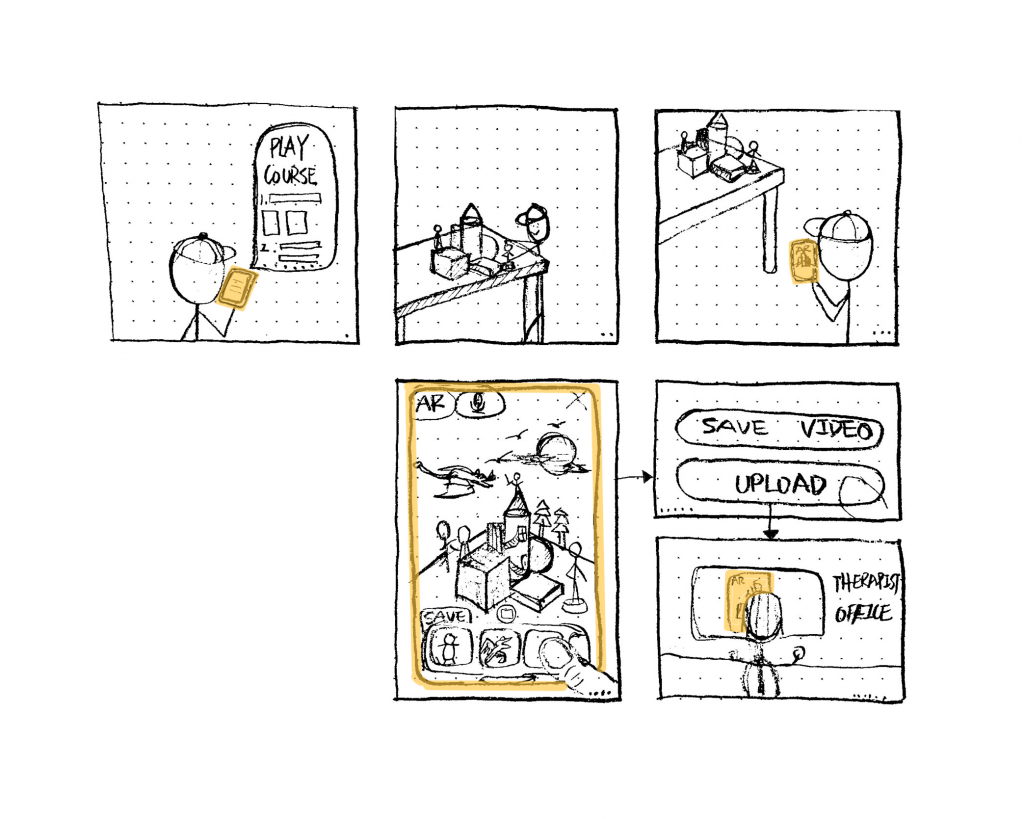

The storyboards illustrates the touchpoints and technologies used in each model, and are visual reminder of the relationship between therpists, play medium, and clients. There are advantages and disadvantages in each model to learn from. For instance, the documentation used in traditional face-to-face therapies inspires me to include a function to save the play scene for continuous play, or future reviews.
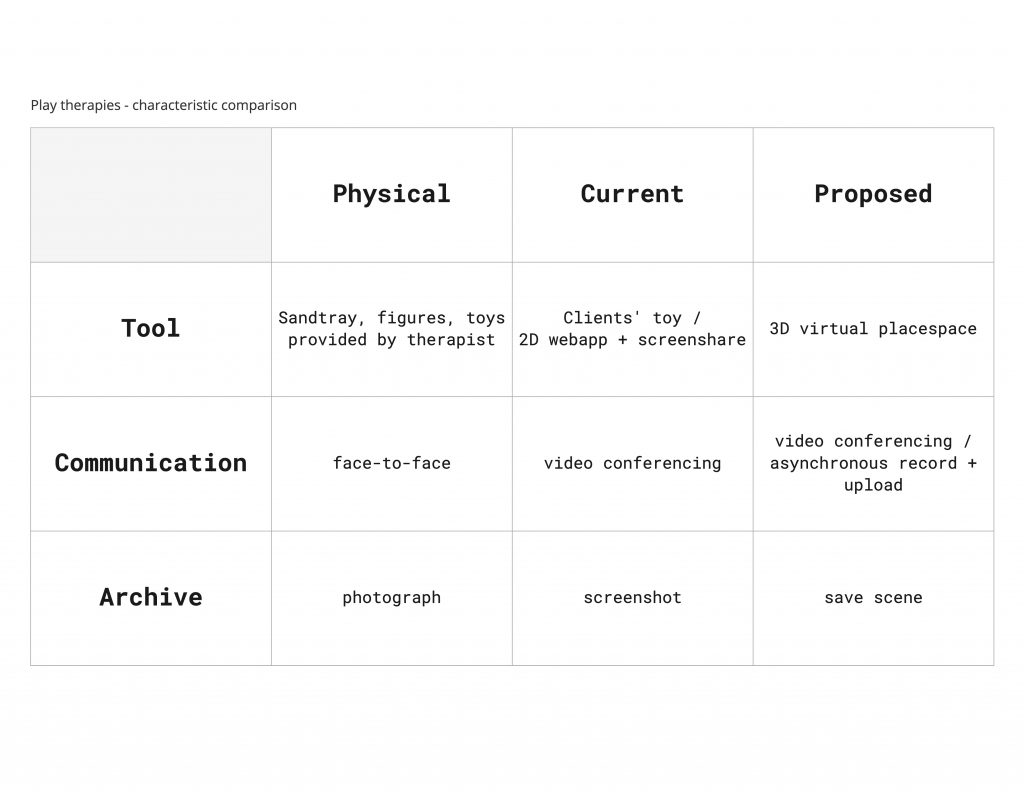
Expanded from the VR play space model, I then made wireframes and a prototype. It is not a complete representation of the proposed model but shows the selection of toys and the customization of the environments.
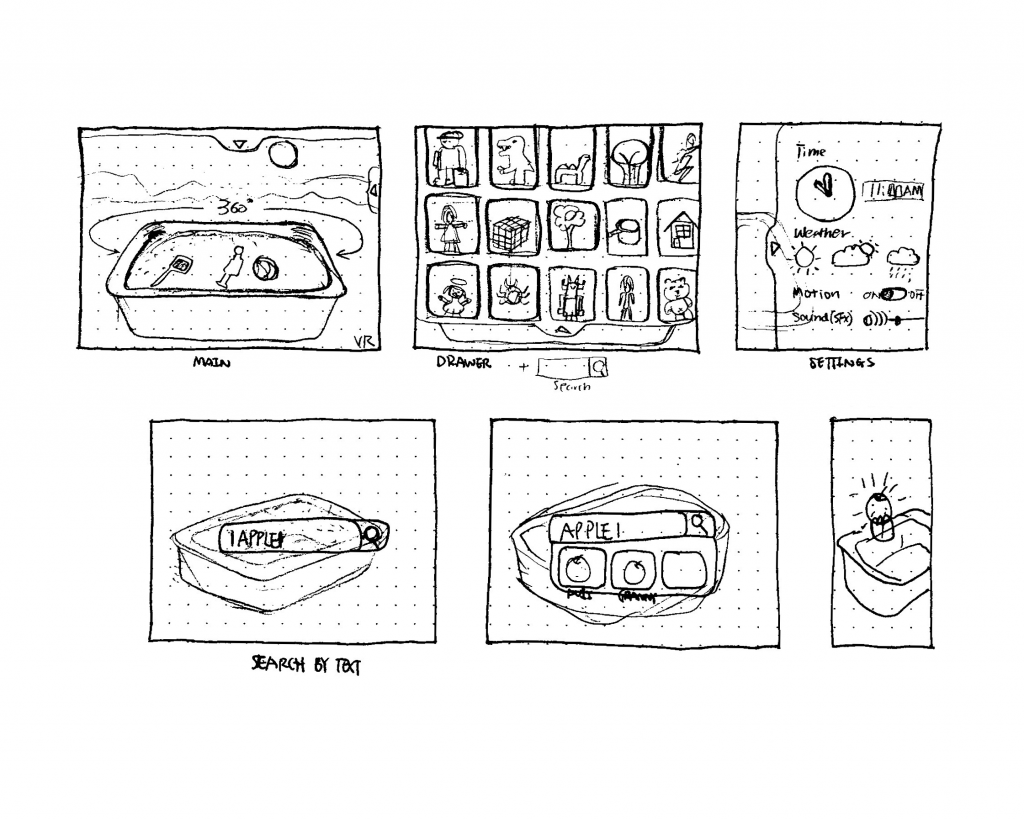
Reflections:
The digital transformation in play therapy is not going to be a straightforward solution to the issues around accessibility. However, providing options outside of the face-to-face model for therapist and clients may be beneficial to their approaches and adds flexibility to the play activities. The digital versions should not feel like an obstacle or distraction to the therapeutic process, but a continuation of what’s already been effective. More primary researches and experiments will be needed to find out what’s more effective and acceptable according to the standards of therapists and clients’ expectations.
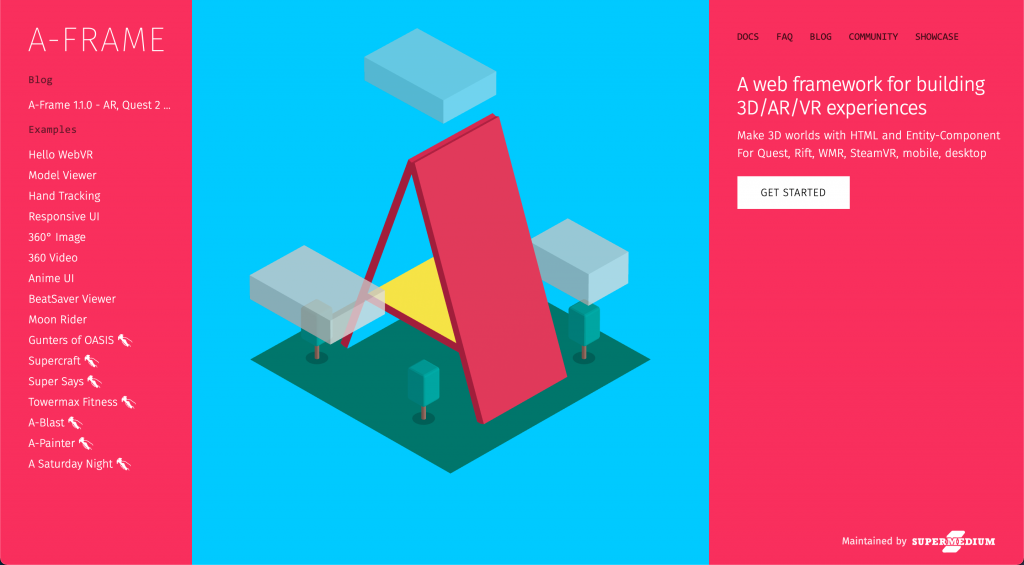

Haig introduced us A-frame, a web-based tool used to create 3D tools and games in a browser. It is a relatively easy way to get into creating VR experiences without a high-demand for programming knolwedge. The fun experience seen above is a world of spheres with googley eyes running around.
At this moment I did not have a firm idea on what this project should be look like. My larger area was mental health treatment in VR interactions. A first intention was to create an immersive space with an environment that a player could feel full embraced, that is vastly different from the reality. Procedurally generated environment assessts such as sky, mountain, and trees are already made available by fans of A-Frame and it was a quick way to fill up the VR space with items of randomized scale.
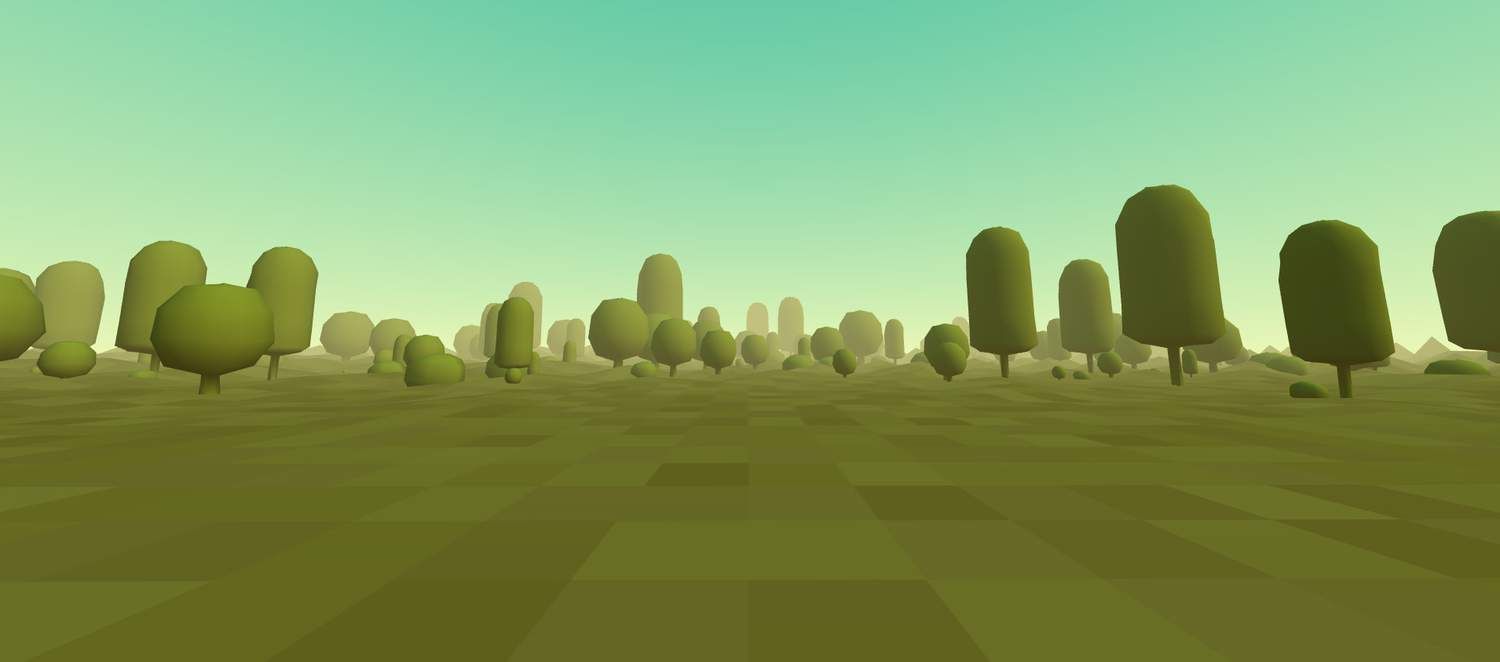
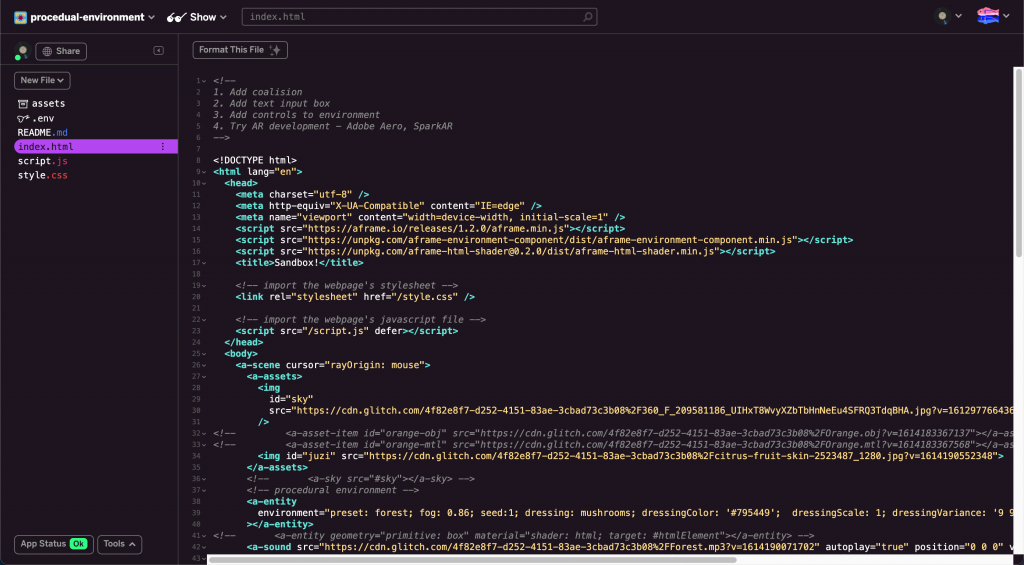
After my first experience with making in a VR space, I wanted to have a more specific direction on what I would like to make, so that I could learn about techniques accordingly.
For the thesis research, I interviewed a counsellor, who mainly works with children, teenagers, and women. Ever since the pandemic her services became completly virtual. Using Zoom makes her patients’ life easier and her service has never been so accessible. Moreover, childrens generally feel happy about this transition for them could relax in their room and talk about their surroundings in the session. However, she also mentioned that because of Zoom, it is harder for her to interact with kids than in her familiar space. She used to making drawings and let children play with mini figures during sessions and now it has been reduced to a virtual whiteboard in Zoom.
Findings in the interview with a counsellor:
The opportunities that I found:
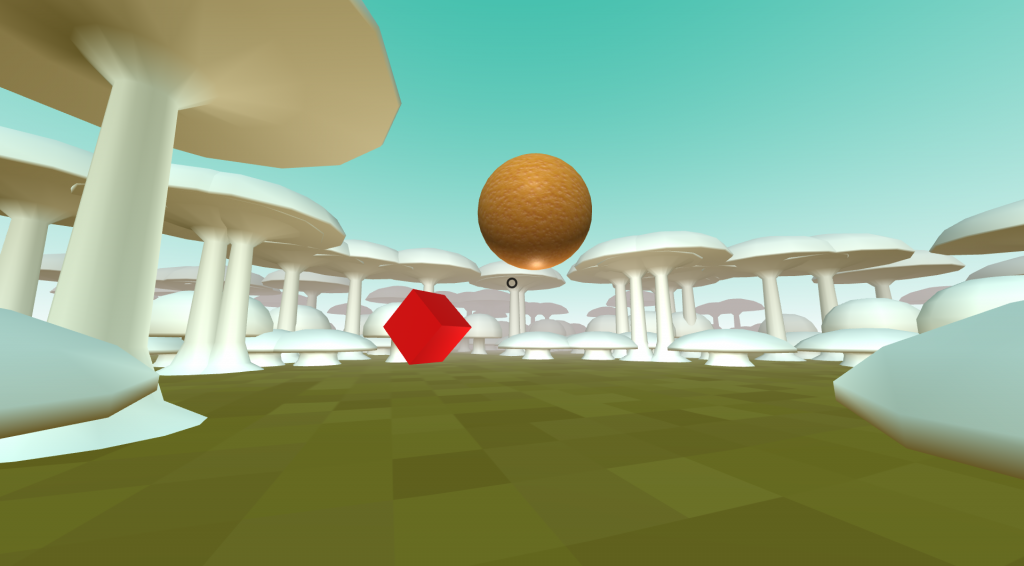
With the insights and experience from an expert in mind, I took a step more in the VR space that I created last time, and added some shapes that are interactive and constantly moving. As of now it’s sill in a rough shape but it can be used as an exercise that tells which direction to go next. The choices for object could use more intention, and interactions between a user and the objects could be more intuitive. I’m excited for the next iteration.
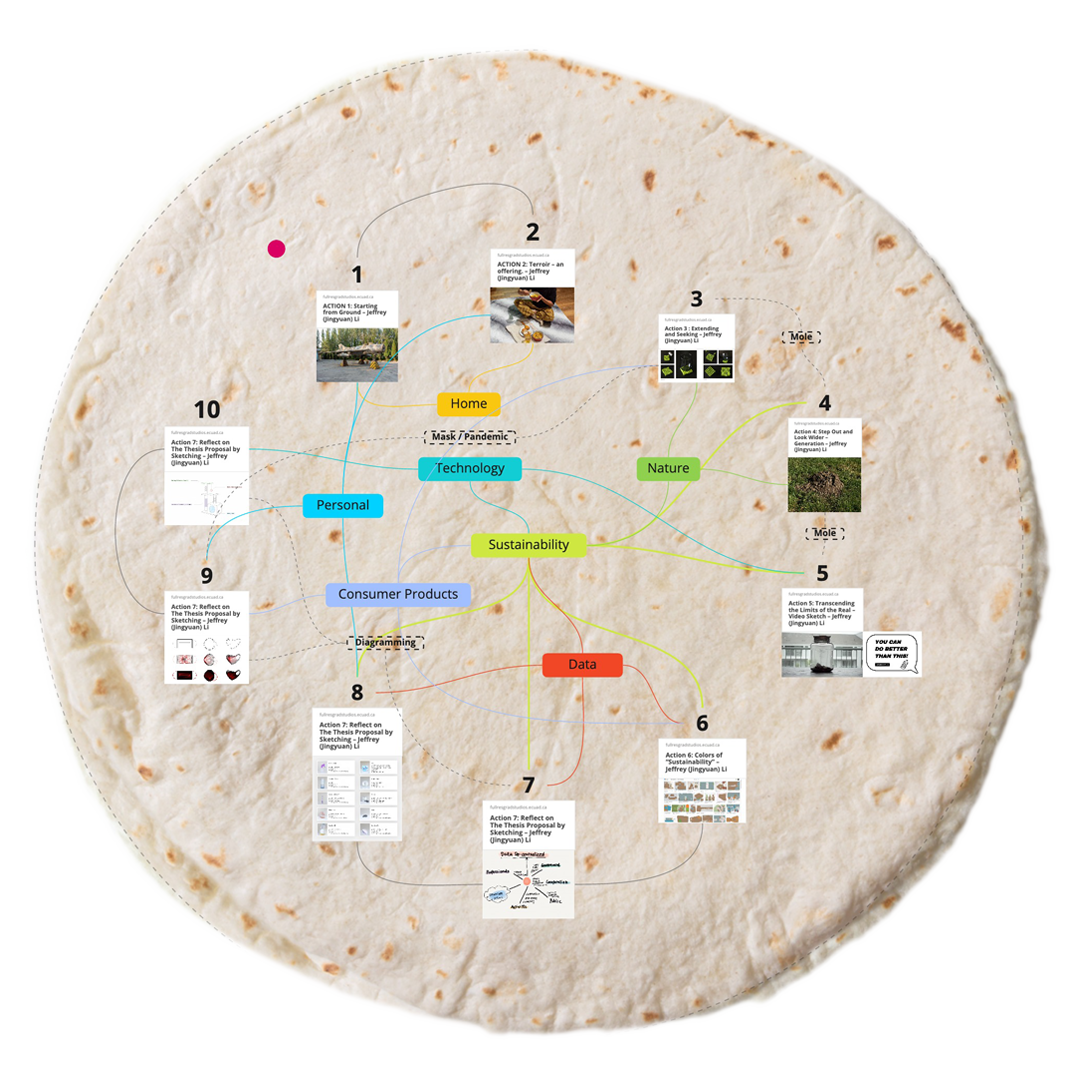
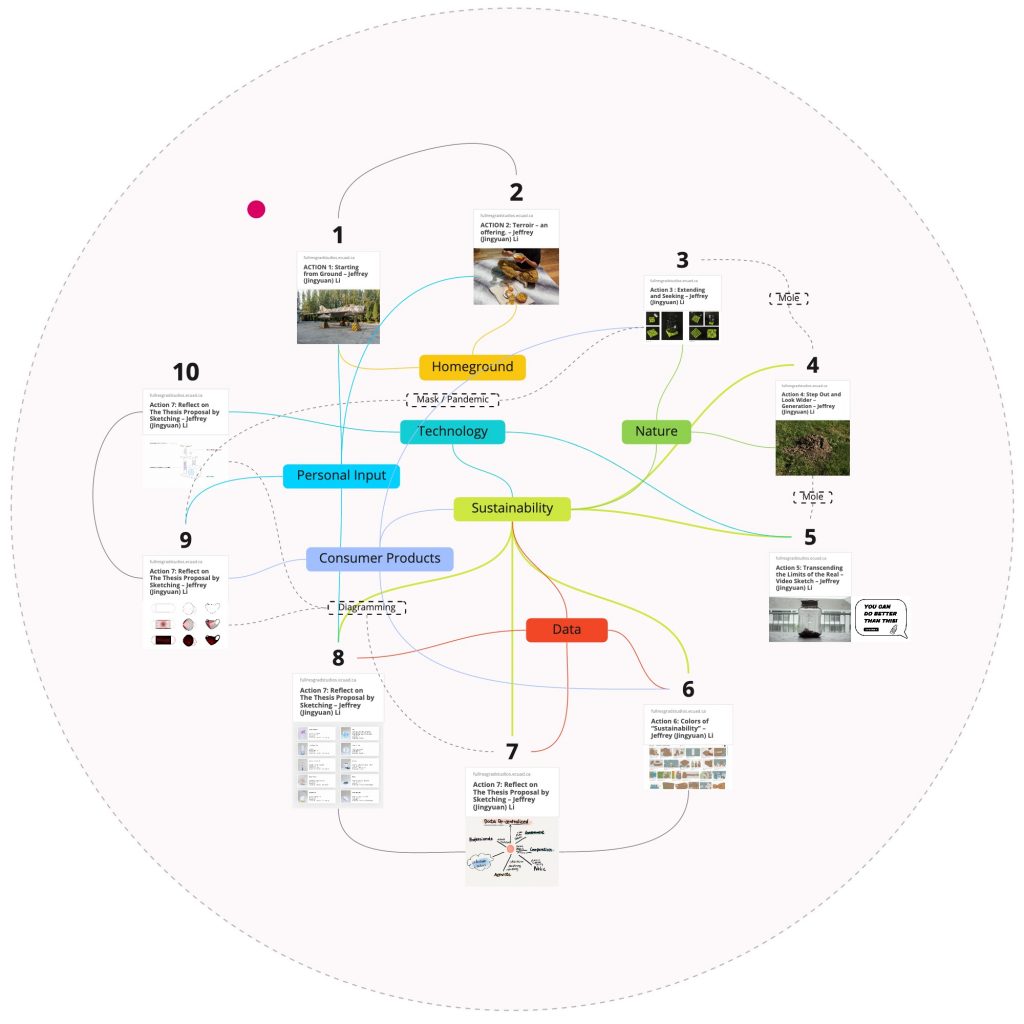
Recently I got to experience the power of making diagrams through assignments in the research method course. It is a great tool to summarize and connect scattered thoughts. In this action, I made a diagram in a form of a circle that summarizes the topics covered by past actions, as well as how they are related.
These actions helped me in forming inquiries in subjects that I’ve always been interested in. Almost all of them were processes of exploration, without forming a definitive result. At first, this aspect was a little upsetting to me, but later on I learned to accept that. In fact, I learned most from the ones in which I didn’t look for a set answer from the beginning.
Looking back, these 10 actions generated a number of topics that are inter-related: technology, sustainability, data, personal input… and they form a kind of network that gives space for new topics, or deeper investigations. I am going to make reference to these actions when working toward the thesis.
See it in Miro: https://miro.com/app/board/o9J_lc9F5XY=/
I have two distinct directions for my thesis, and in this semester so far I had only explored one of them. Being stuck on one direction made me want to take a break from it. In this action, I went to explore the issues around Social Media.
Many new inventions in the past had been criticized at their birth for different reasons, famous examples being bicycle, automobile, and television. As time passed and people get benefitted from them, the initial concerns would fade away. Will it be the same case for Social Media? We don’t know yet. However, its popularity has reached further than those older inventions, while using way less time. At this time, Social Media is a changing medium, controlled by monopolies that are often marked by manipulative, dark patterns.
I want to look at how social media turns actual social interaction between human into a product. This lens has led me to think social media as a mirage for the reality. The function of social media can be compared to a cat tree, which is a mimic of cats’ ancestors living environment in the nature. Cat trees were patented by Frank Crow in 1968, Los Angelas, featuring a wooden column with several platforms. Today, there aren’t any changes to its fundamental form, but the common ones are often covered with soft materials, with fluffy toys hanged by a string.
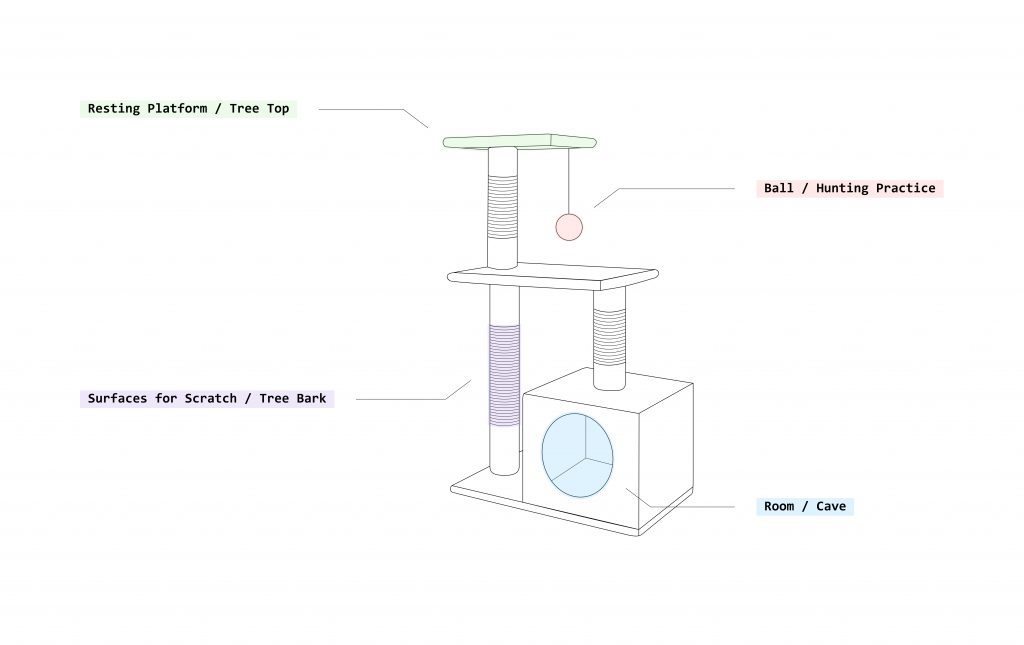
To make the comparison, I took apart the components of a common cat tree and illustrated the function of each component. The industrialized product looks nothing like a real tree, but provides a range of features to support behaviors of a cat. The resting platform imitates tree branches high above the ground, allowing cats to sleep and relax; The hanged fluffy ball looks like a mouse that cat likes to chase and play with; Rough surfaces made with nylon ropes fulfill the cat’s need to scratch; A darkened space for cats to hide, just like in a tree-hole or cave. These behavior-oriented designs provides a healthier environment for house cats by catering to their needs – resources and structures that used to be scarce in a human living space.
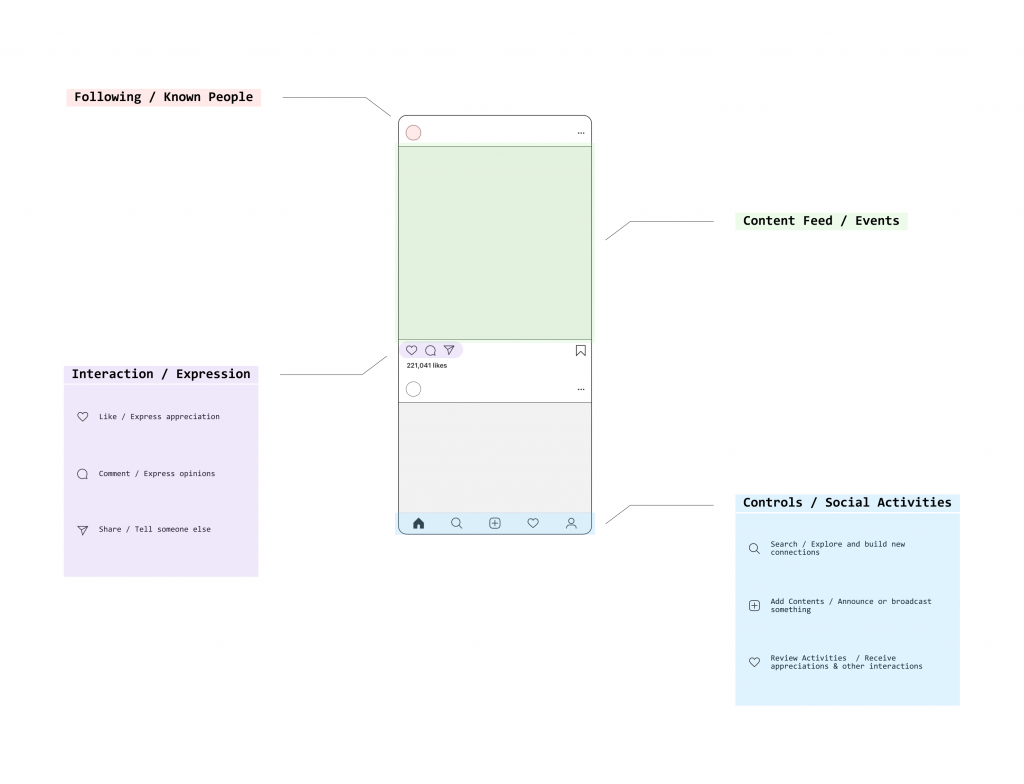
The same behavior-based design also happens in social media, but in a much more complicated sense. Our natural instincts to socialize and connect are made into virtual interactions, represented by buttons and user interfaces. Similar to cat trees, we feel content when our social needs are met. However, after making the illustrations, I realized one of the biggest difference between social media and a cat tree, is that social media goes beyond just meeting our needs. The platforms would change our behaviors based on the company’s need, for instance, to profit. Knowing this sad fact is helpful because it points me a direction for my later researches, which is to see through social media’s manipulation and return it to a tool for functions that we intended to use.
During 2020, the Covid-19 pandemic shaped a variety of “new normals” for the public. Wearing a mask or a face covering is definitely one of the most tactile and close to body experiences. In many countries, masks are required in all public occasions. Healthcare authorities such as CDC have emphasized the significance of wearing masks to help control the spread of virus. Apparently, there is a different voice that declares the mask has no use. Looking at this debate, I would conclude that the public has mixed feelings and specific emotions towards masks. Under the pandemic circumstance, a mask is not just an object or a piece of accessory any more. It symbolizes a cultural and political point of view. The choice of type of mask embodies personal opinions and consciousness towards the pandemic. It becomes an interesting phenomenon to explore and study.
To have a piece of fabric covering the face changes the way we interact with each other; Used masks are suddenly seen as the dirtiest object you can have. The heat trapped inside, the muffled voice, and psychological discomforts altogether, make the mask-wearing experience a not-so-pleasant necessity during the pandemic.
I teamed up with my girlfriend in this action, and each of us illustrated our fear and discomforts when wearing three types of masks.

Following last action’s plan, I decided to look at the data of objects around me. Thanks to Zach’s suggestions about looking at data outside of the realm of digital and numerical, I started to look at objects and made my own criteria for collecting data.
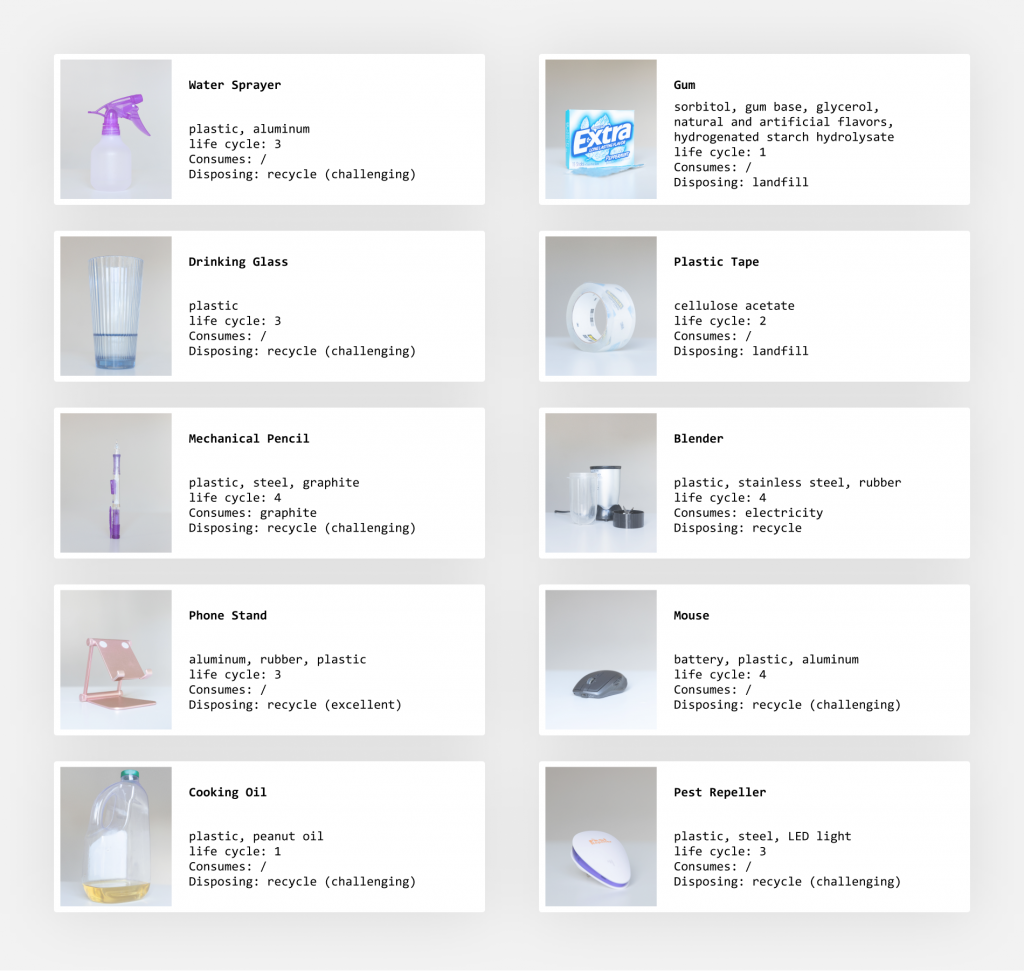
Gathered around 10 small objects, I looked for what they had in common. Turned out, material was a crucial part. Other than that, I decided to evaluate their “life cycles”, that is how quickly these objects will eventually be threw away or lose their intended functions. By creating a grading system that considers its structural complexity, usage frequency / length, and possibility of getting repaired, I assessed the life cycle for each item, ranging from 1 to 5. The results are very informative.

I then made sketches on how these data could be analyzed and visualized. The first diagram shows out of these ten objects, how many contains plastic, and how can they be disposed. It informs me that these frequently used objects are not the best choice for the environment. But at the time of purchase, considering its other properties, like functionality, price, and convenience, it might had been the best option for my need. The fact that my analysis of their “environmental data” makes me question my first choice is quite inspiring: At the time of purchase, somehow I tucked the consideration for the environment, as well as the work of analyzing their impact to the back of my head, and prioritized my need for their functions at the moment. In retrospective, after investing some time into knowing its impact, I realized that there were better options than buying those products, and it is something I would consider next time before making decisions. If this assessment process happens before every decision, the objects around me will be much friendlier to the environment.

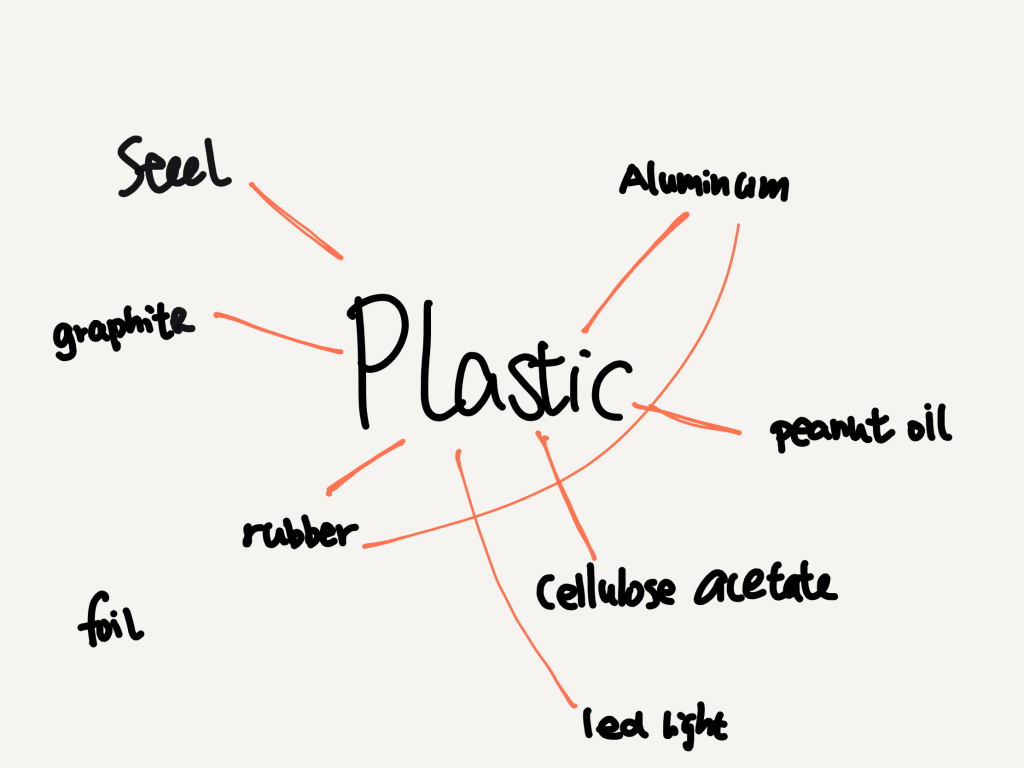
When applying to ECUAD, I wrote a proposal for my thesis design-research project. It has been two months since this term started, and through wonderful conversations in three courses so far, I realized there were many flaws, and ignored aspects in the original proposal. Although I am still choosing between potential thesis topics, I’d like to look at the proposal from a refreshed perspective and refine it.
The original proposal is embedded below. You are welcome to leave any comments here in the google doc.
I summarized the proposal into key points that describe the features and functions of my proposed thesis project. I then reflected on each one and wrote down immediate potential changes, based on past conversations and feedbacks.
In Action 5, I did a video sketch about a guide for eco-friendly shopping. That was one of the functions I imagined in the original proposal. However, its flaws are obvious: 1. It is not known for sure if a product is truly sustainable despite what it claims. (In fact, most of them aren’t) 2. There are financial privileges blocking the access to live eco-friendly. 3. Eco-friendly life habits should go beyond just purchasing habits.
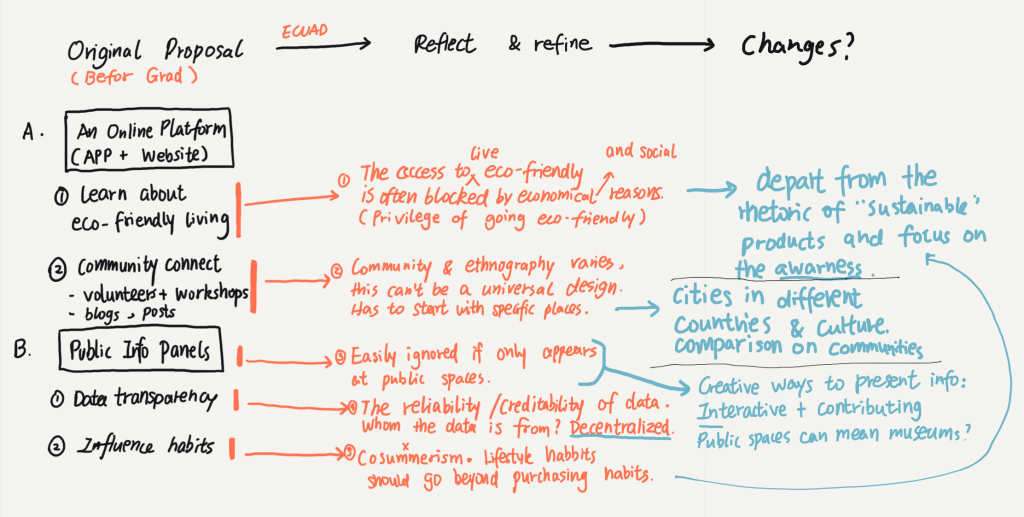
I then started to draw rough sketches on another key point. I mapped out stakeholders that are involved in a decentralized data society. These are just initial imaginations and in no way is a valid assumption.
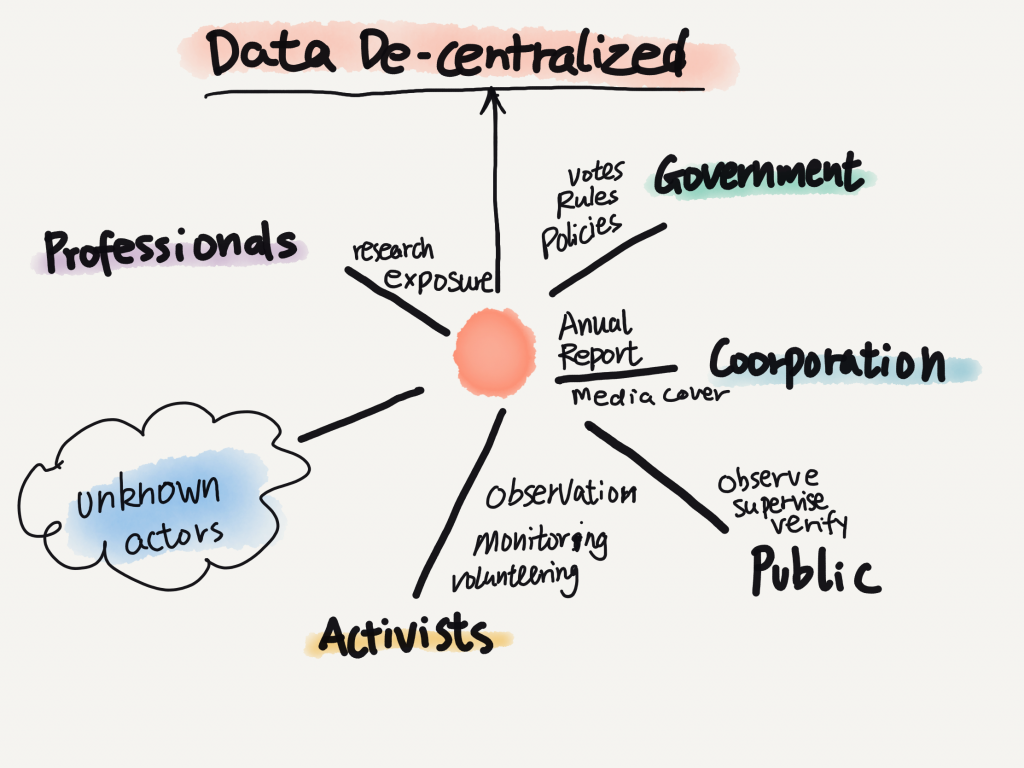
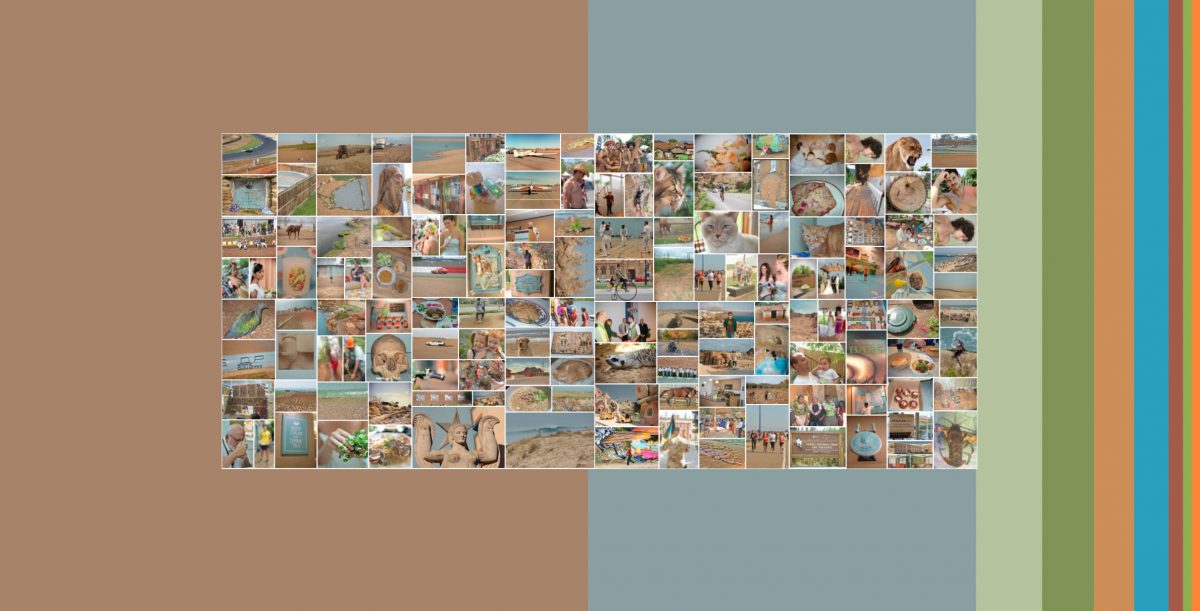
Before I had any solid ideas, I made a goal for this action:
“Investigate product sustainability through actions of research and data visualization“. In Action 5, a great discussion came up when presenting my second video sketch: How do we know for sure that one product is sustainable, that is from its source to the market? It would be generalizing if we just make difference between one type of product like a plastic bottled water to another, such as seasonal produces. There has to be more intensive searches into that product on its own, presenting specific information exclusive to that particular type of apple, grown in that particular piece of land. This realization is made me choose such topic because I want to explore ways to monitor product sustainability that are democratic instead centralized.
One method that came across my mind was data visualization. Since data can be gathered from a crowd-based manner, it might opens door to an ideal situation where everyone voluntarily contributes their data to monitoring the sustainability of a product. However, I did not have any prior experience in working with data, collecting or presenting. To not make this action just about learning skills, besides starting to learn the programming language Python and read books about data visualization, I started my action by drawing out clues and parts that I can work on, since the topic is very broad.
I decided that the subsequent actions in this term will be mostly focused on this topic, so I took it apart to multiple directions in the pictures below. There are several criteria to consider when evaluating the sustainability of a product, and for this action, I chose to examine the skin of products – the colors in packaging.
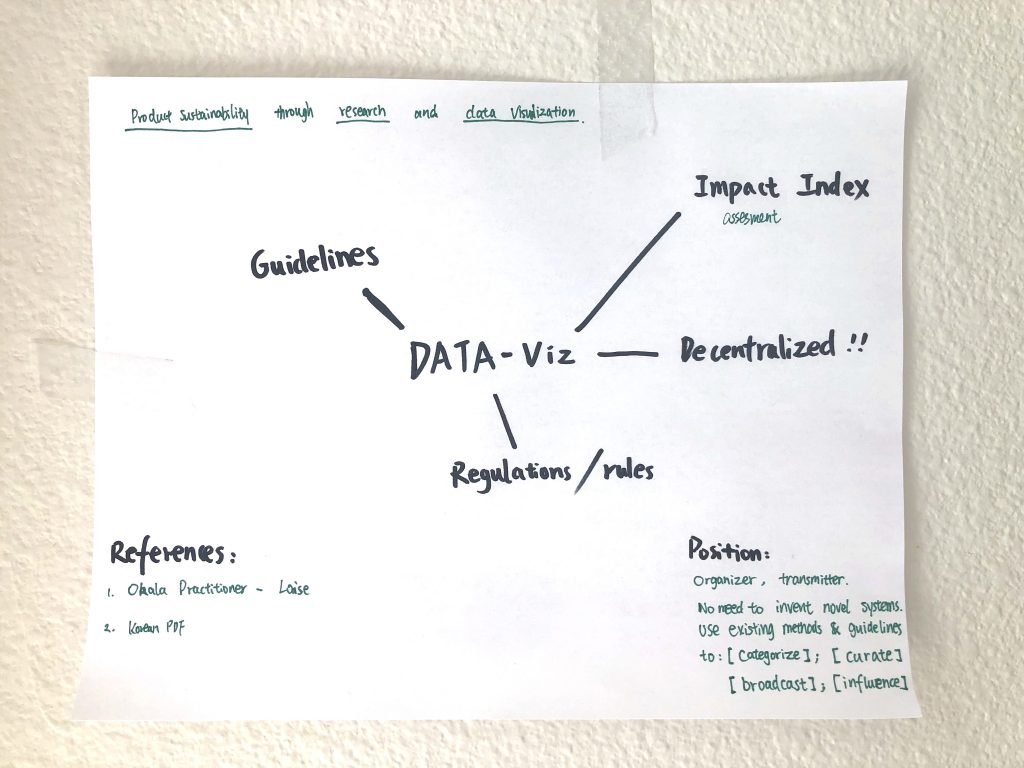
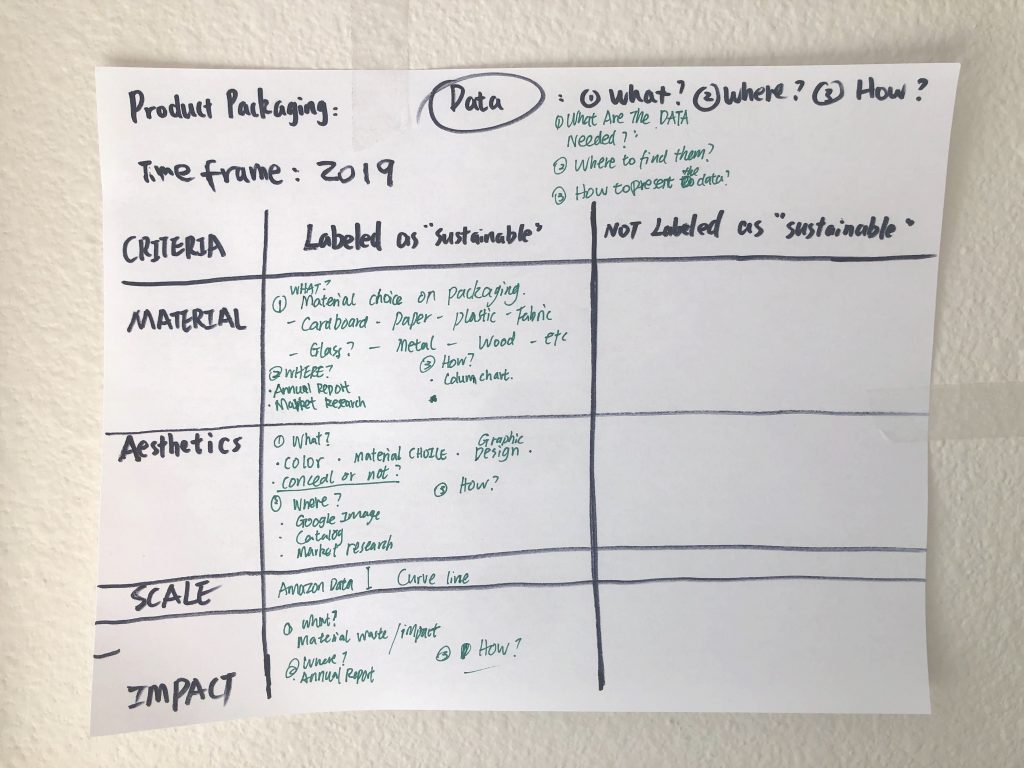
A question was in my mind for a long time: Does Sustainability often presented with certain aesthetics? The choice of color seems to be a prominent consideration when designing packages for a product. To explore more, I also downloaded many annual business reports from big companies like Coca-Cola, and also from the companies that claim to make eco-friendly products, like Ecoproduct. I went to evaluate the percentage of “sustainability” played in those reports, manually logging the colors that are used in the in the sections related sustainability, as well as the page number data (how many pages in a report were about sustainability).
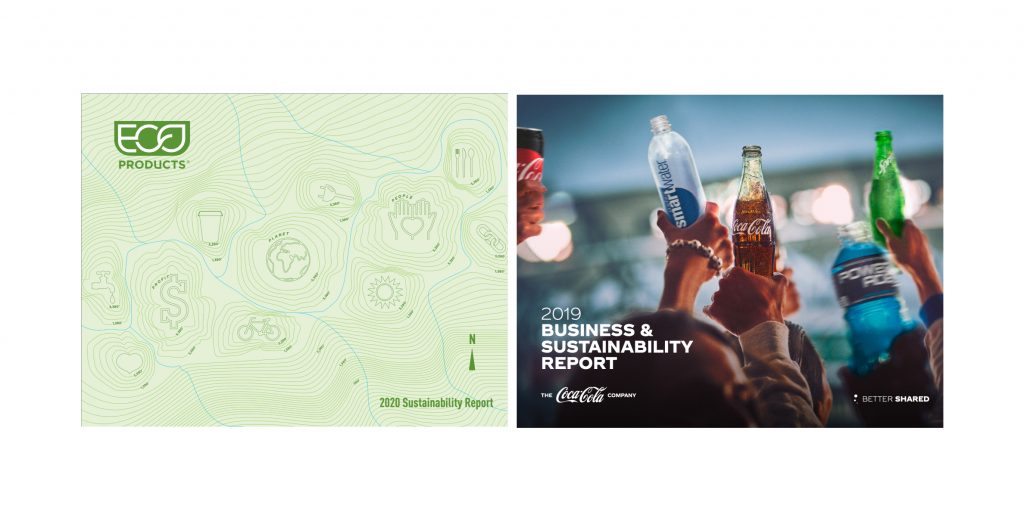
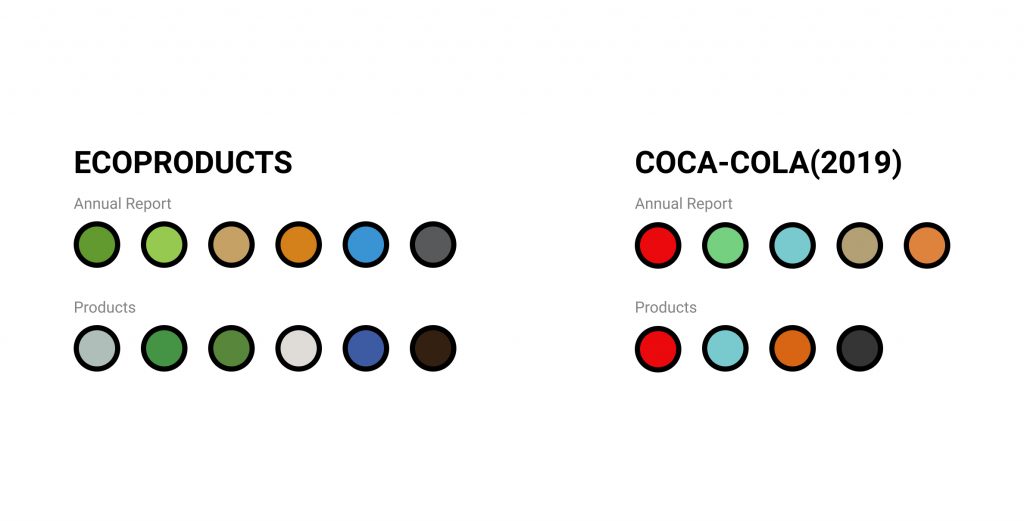
During this part of annually logging, I found 3 things very difficult:
Moreover, the data gathered can be really confined due to the corporate presentation manner.
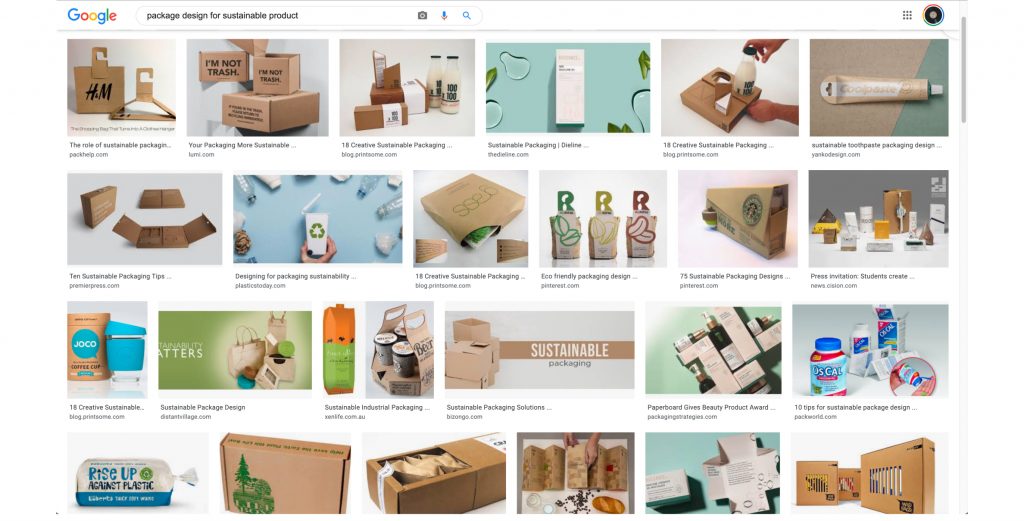
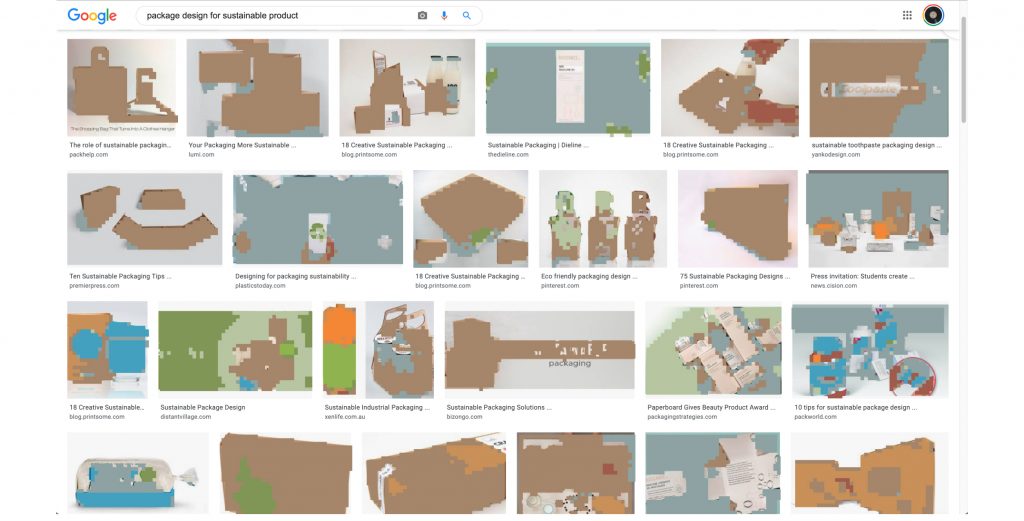

I then expanded the color research into a more broad scope of products. I searched for images of sustainable product packagings, and collected their color individually. From all the results I put together a color palette of 9. These colors were taken into a reverse search because I wanted to see what those color stand for in the real life. Turns out its mostly desert, sky, water body, skin, food, and pants. How are the packaging and these subjects are related?
Overall, I was surprised by the amount of data that I had to collect. I was puzzled by the extraction of data from these reports. It was really tricky. How should I do it? Next step I am going to learn to use Python to solve this puzzle.
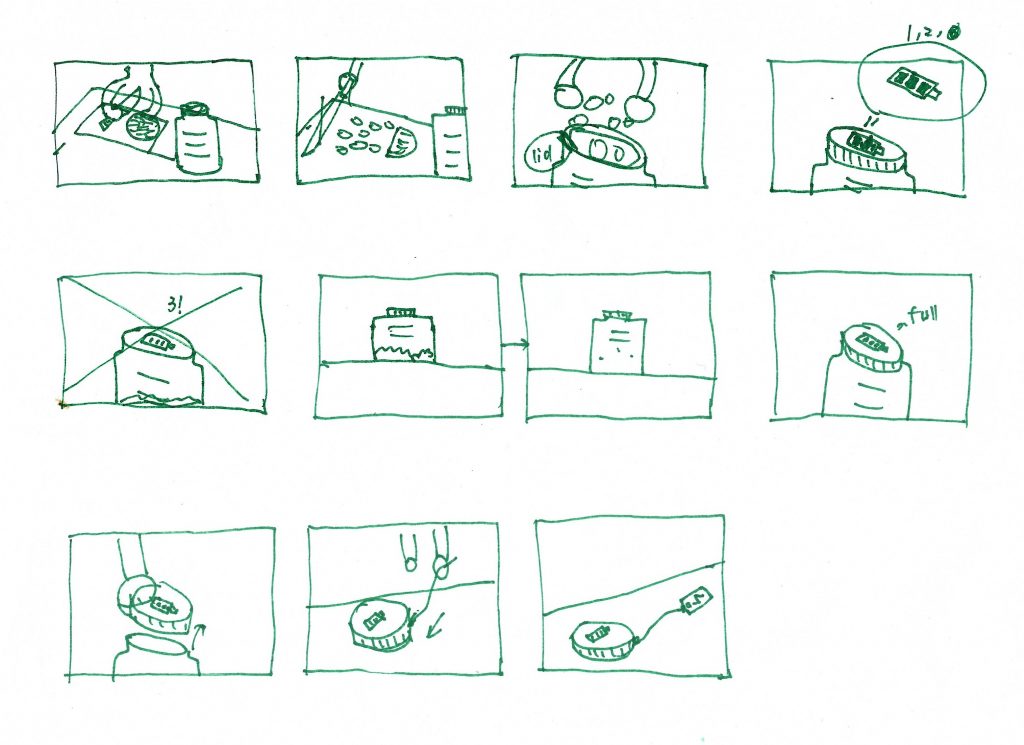
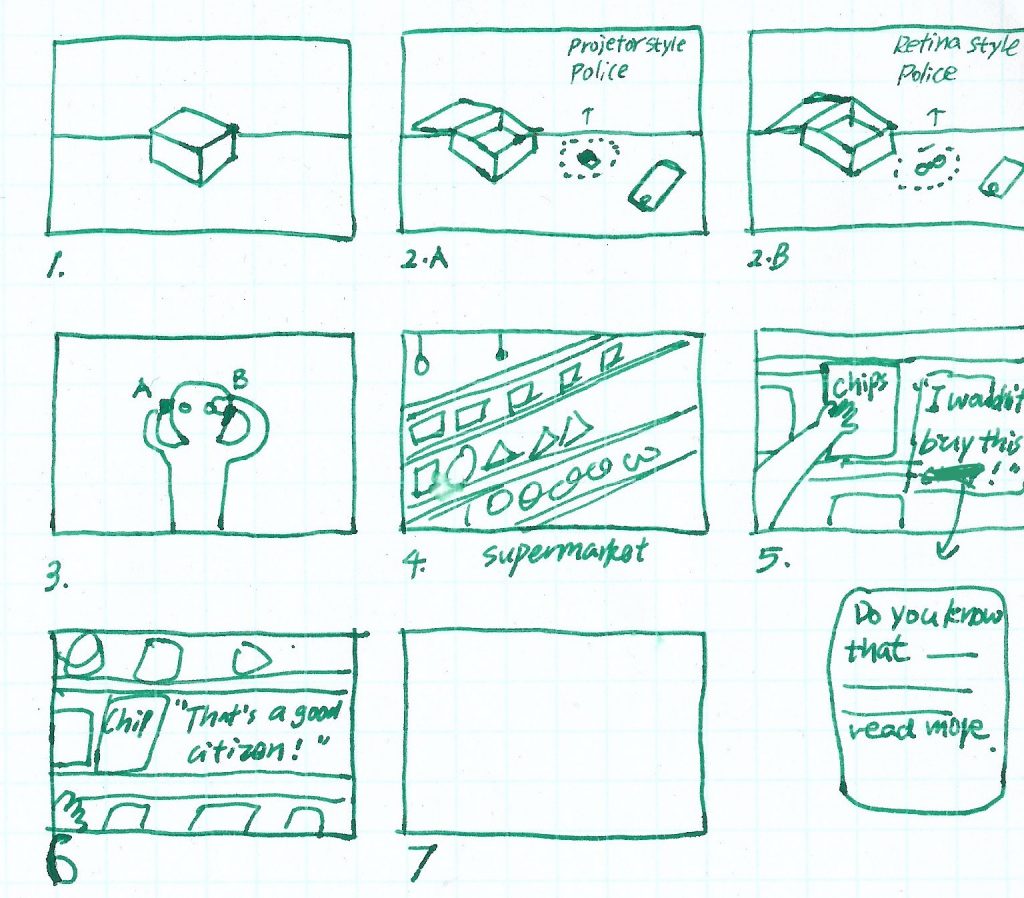
This action has been a great exercise in exploring possibilities related to my thesis. After discussion with peers and professors there are several problems within the work. 1. The eco-shopping guide, as of right now, is too generalizing. For instance, not all apples are “ethical” during the process of cultivation, transportation and distribution. This notion influenced me to expand and deepen my view into examine the sustainability of products through research, and find ways to present the findings.
Consider your Action 3: when working with your chosen lexicon phrase what peripheral ideas/spaces did you touch on or think about. What is the broader field around your initial intervention? How is this important to you? How is it important to someone else? How is this important to a community? What’s the relationship between this and global-scale concerns?
Take these thoughts (or writing) with you and…
– Leave your home. (if you’re not in quarantine)
– Prioritize seeking things of nature. Seek out beings, found materials and phenomenon.
– Develop many-things inspired by the peripheral space / the field / the broader context.
Allow yourself to re-define the problem through new acts of making———————————————————————————
Prompting questions: (You are not obligated to answer these)
Consider how your neighbourhood contributes to your feelings/sense of home?
What does a change in context do to your thinking?
How does/can nature play a role in your designs?
Hint:
We don’t expect “solutions”. We would really like to have some provocations for interesting and engaging conversations about context; how does moving from the specific and local context in Action #3, to the broad and wide in Action #4, impact our making?
This action has been a challenge for me. Living in urban environment for too long made me forget to sense nature in my surroundings, and I felt the difficulty in connecting with nature, let along developing ideas and creating. I remember Louise’s words in class that nature does not have to be something in the wilderness but can be the wind blowing in the face and I think that is a great way to think of the nature. I made several attempts without a finite result in the end. However I was able to reflect on my attempts and generate new thoughts and ideas.
While continue reflecting on my Action 3, in which I wanted to relate to and create around phrases “Evolving Permanence”, “Ecologically Literate”, and “Relational Design“, I stepped out of my home and got into the nature close by, which is essentially a piece of state-owned, untended land besides a major road.
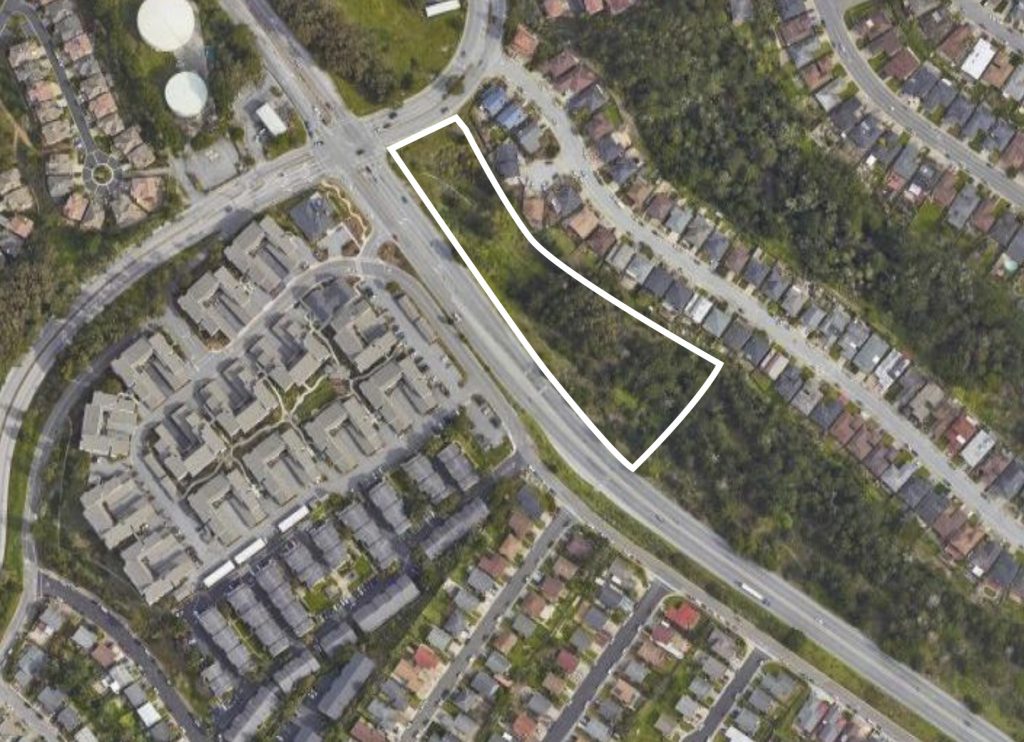
Going into an area like this gave me this weird feeling of trespassing. Because it is located besides this busy road without sidewalk for pedestrians, and close to the backyard of those houses, the access to it was almost blocked. There are many dry and spiky plants grown in this area. Their attributes made them abundant because any creatures passing by would help spreading seeds.
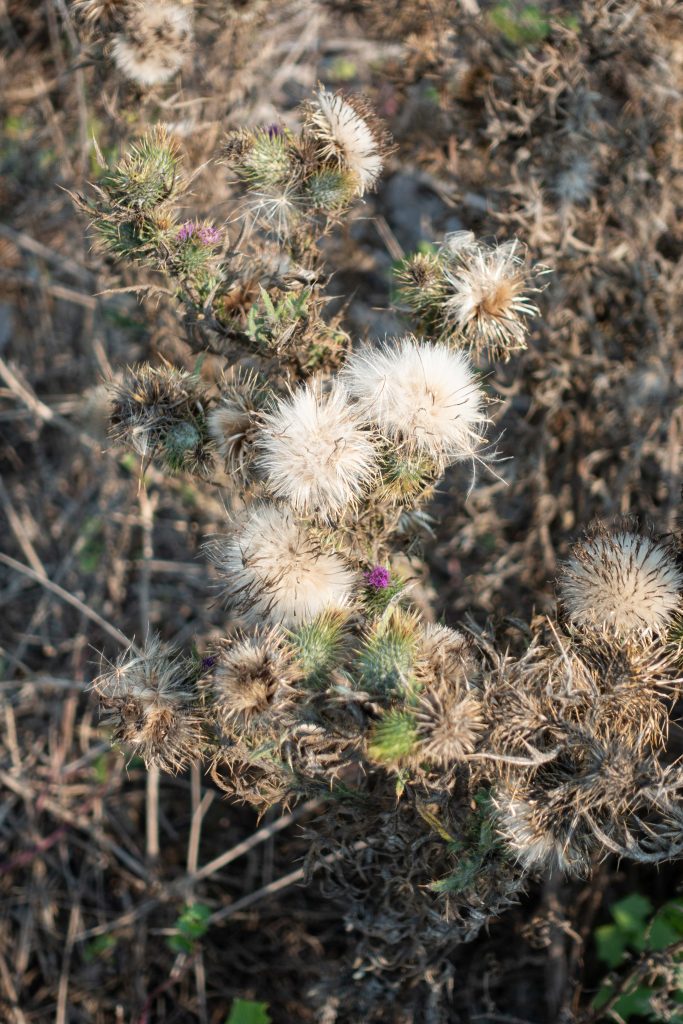
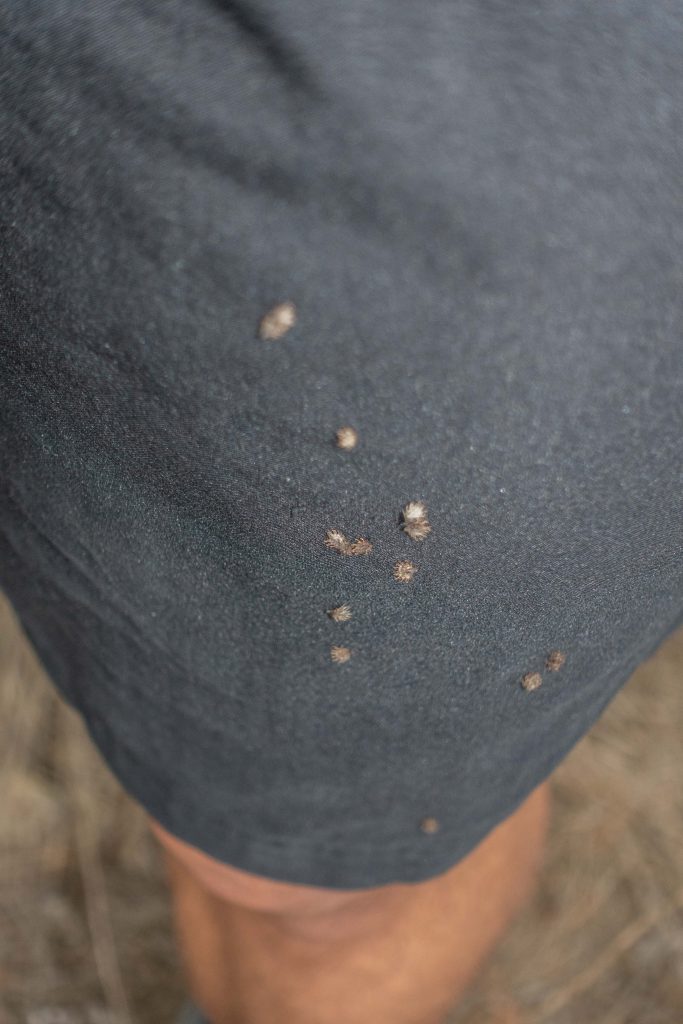

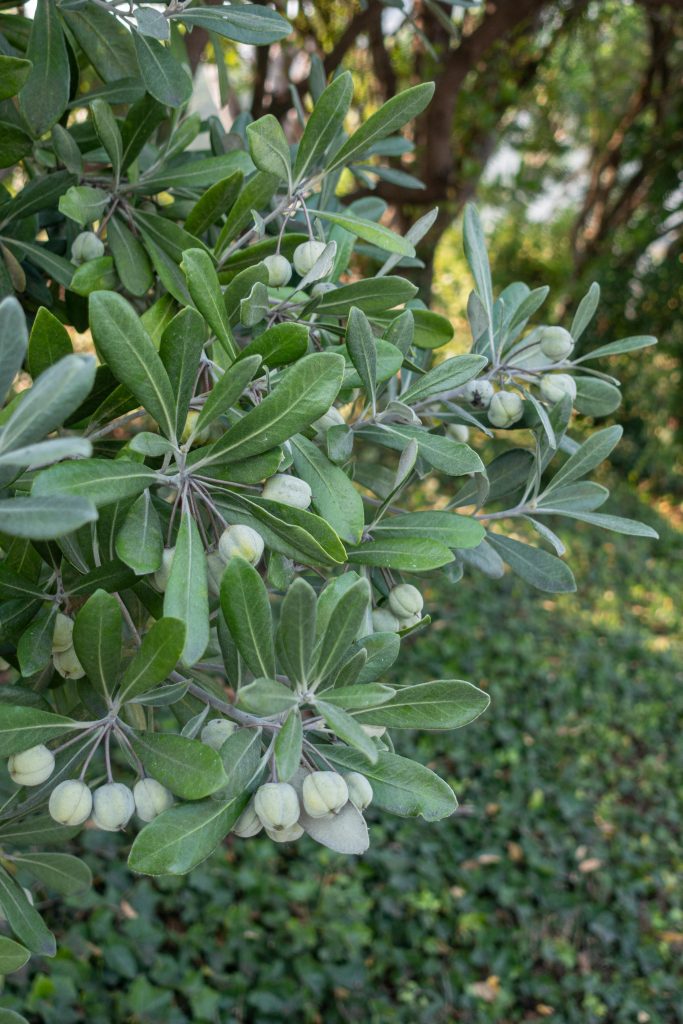

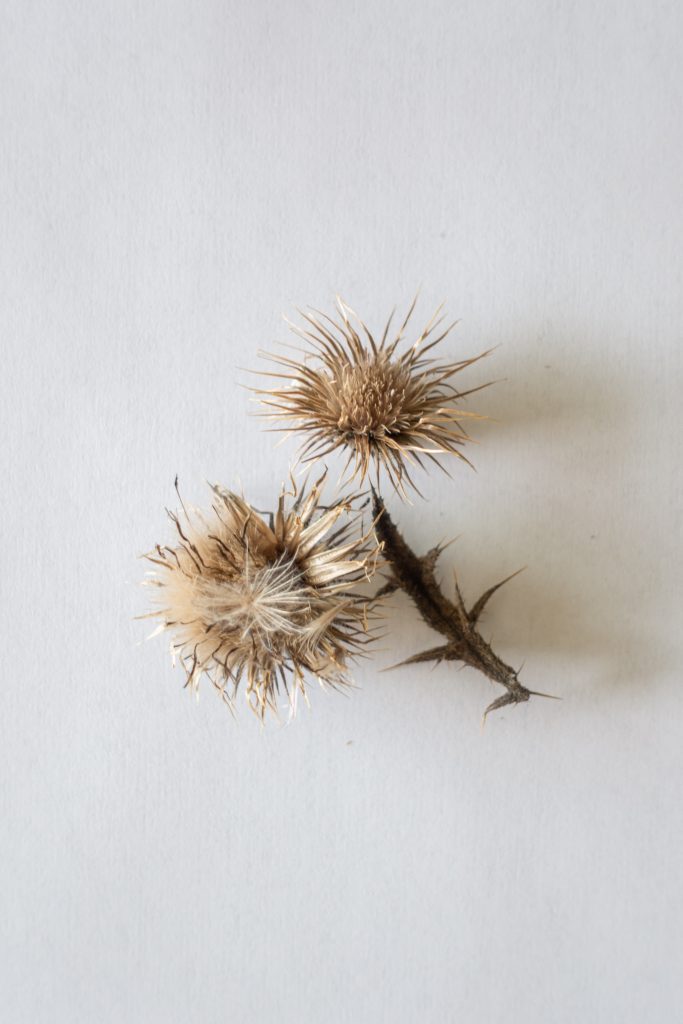
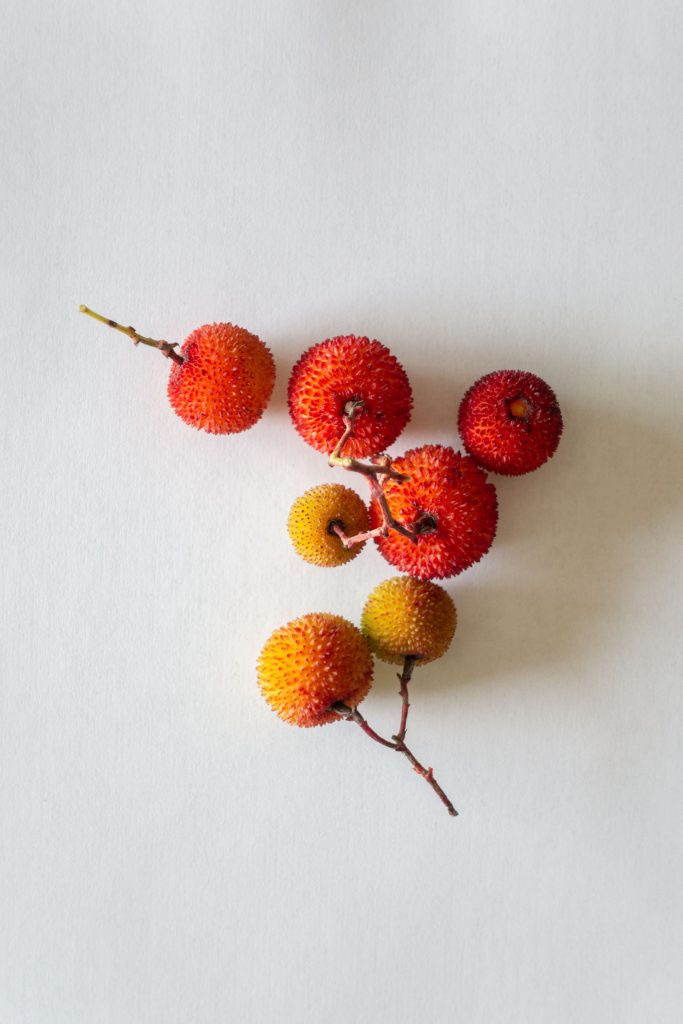

On the way to grocery store, I was lucky enough to witness a mole digging into the ground and making a mole hill, and half of it was on the concrete sidewalk. This was actually the first time ever I saw a mole hill, on the top of the fact that the mole was working underneath!
Next day, I went to the park near the molehill sighting and found more than a dozen of molehills. Creatures living underground are often invisible in urban spaces. I tend to think that only when a piece of land was left undisturbed for a while can the wildlife finally inhabit and have fun. However, these molehills often appears extremely close to a walkway next to a busy road, and yet they display an abundance of activities. It made me realize my lack of knowledge on these beings, I wanted to know more about their habits.
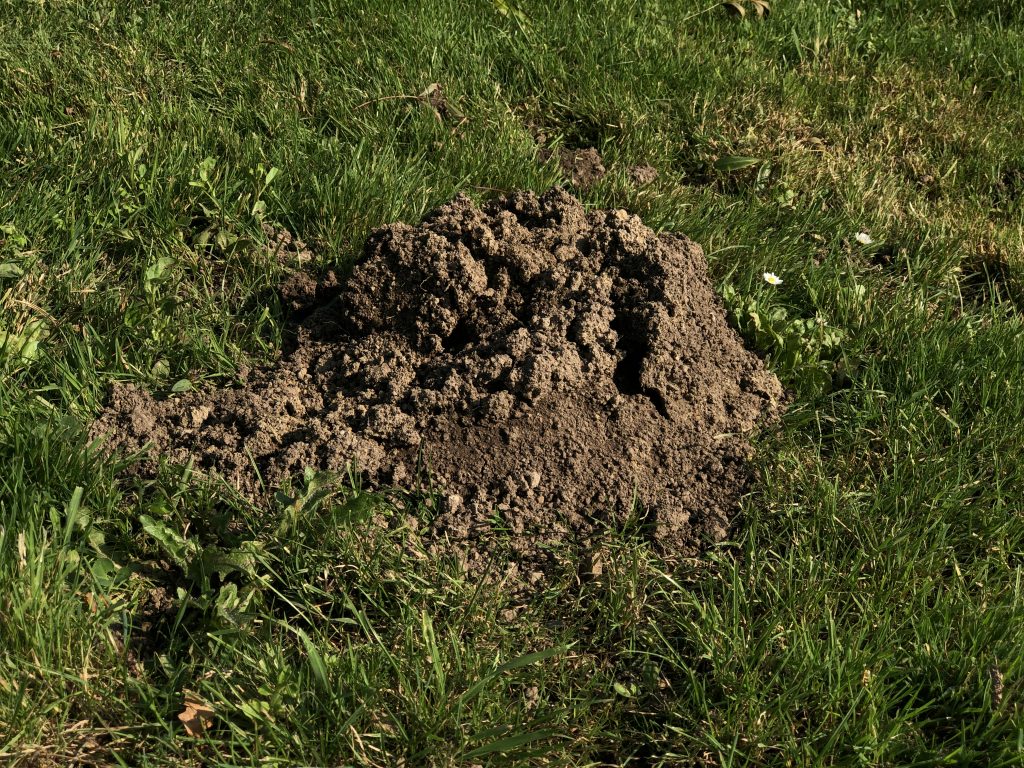
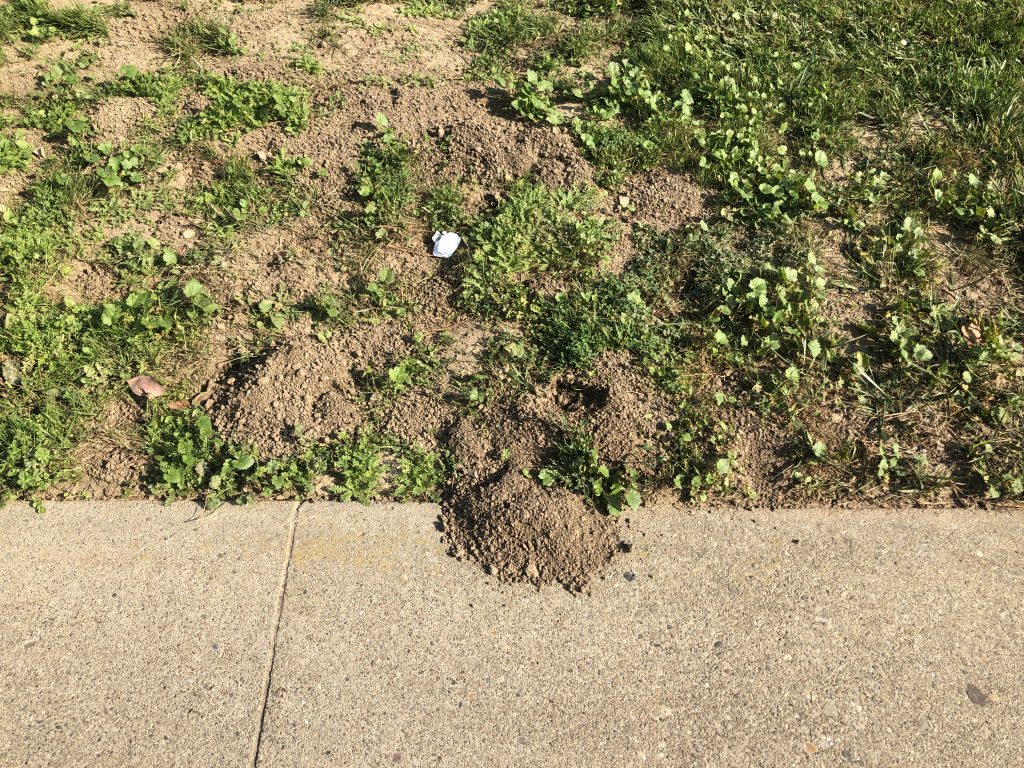
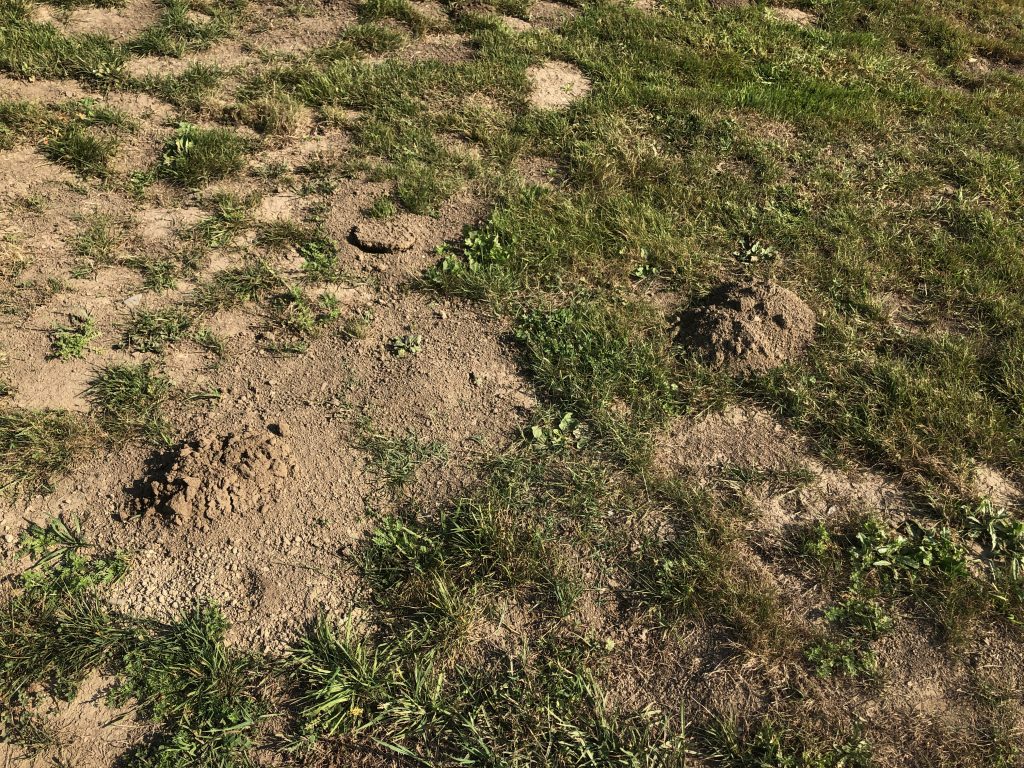
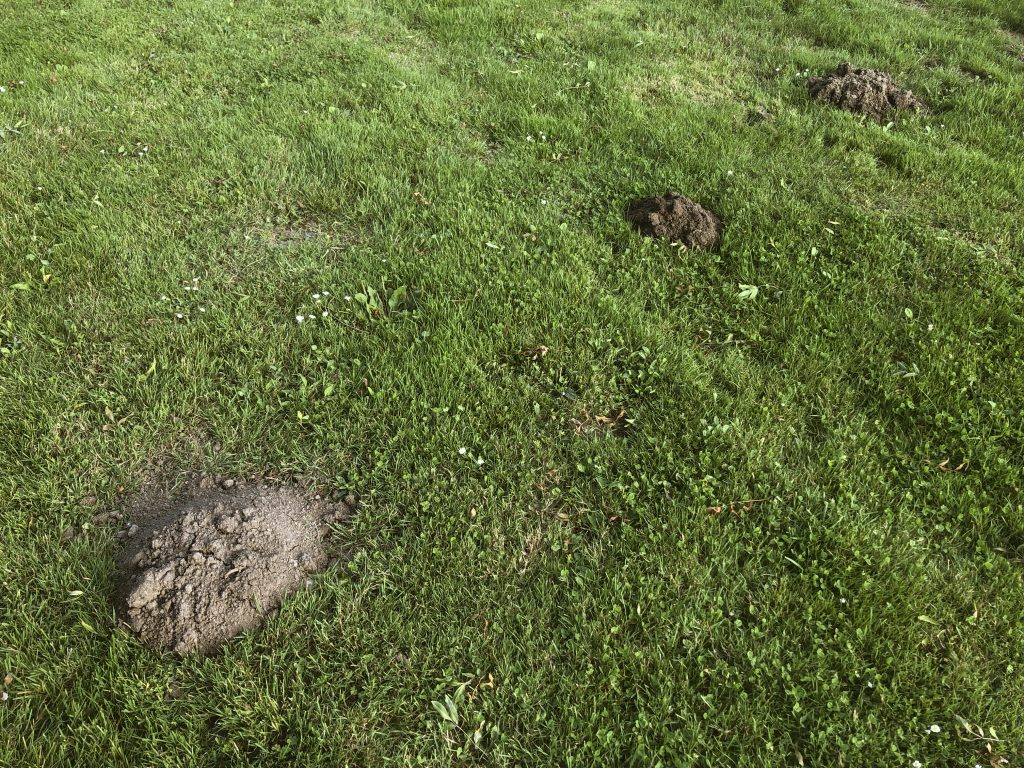

By doing some research on the species of mole, their life and habitat became less mysterious to me. Molehills are usually formed when a mole is digging the hole from surface to underground, where it would work through a series of tunnels that leads to different directions. But the most basic structure can be illustrated by the image below.
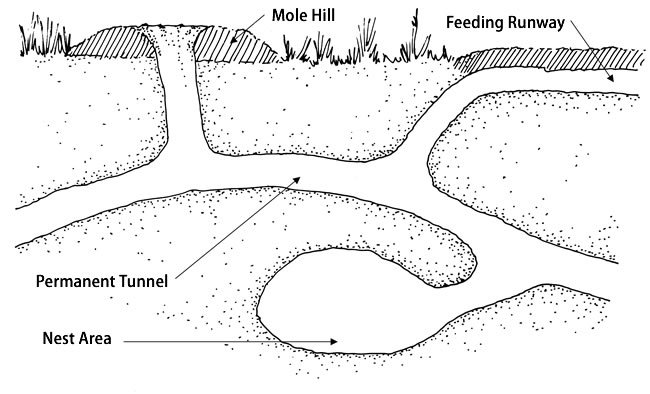
A mole’s territory is a maze-like system of connecting, intertwining underground tunnels located at various depths (Fig. 3). It’s a perfect fortress in which to survive threats, either natural or manmade—drought, freezes, predators, toxic gases, and other poisons. They routinely scent-mark their tunnels while patrolling for insects and other invertebrates that travel or fall into their tunnel systems.
Moles construct two kinds of tunnels: surface tunnels and deep tunnels, or runways. Surface tunnels are located 1 to 4 inches below the surface. These appear as 3-inch wide ridges or rips in the lawn or in soil, or as puffed-up areas in mulch. In lawns, surface tunnels are often held together only by the surrounding grass roots, and you may see the ridges—or feel them as you step on them. Surface tunnels wind around with no apparent direction or plan; they are used once or revisited several times for feeding purposes, and possibly for locating mates in the breeding season.
Surface tunnels connect with deeper runways that are located 3 to 12 inches below the surface, but may be as deep as 40 inches. Deep runways are main passageways that are used daily as the mole travels to and from surface tunnels and its nest.
“Living with Wildlife: Moles.” Living with Wildlife: Moles | Washington Department of Fish & Wildlife, wdfw.wa.gov/species-habitats/living/species-facts/moles.
I also learned that mole’s activity helps keep soil healthy and enrich the nutrients. This let me relate to the human interventions used in agriculture to fertilize the soil and maximize crop production. Modern farmers use a series of tools and vehicles to spread fertilizer and sometimes transform the condition of lands greatly. Ironically, moles are usually treated as unwelcome visitors – sometimes pests even – that are often kept from yards of suburban houses. There are even professional mole catcher companies specifically responding to this need.
I wanted to examine the soil more closely. Through research I confirmed that since the molehills are usually the byproduct of moles’ tunnel-building, they are not needed anymore once a mole is underground. Thus I decided to take some samples of molehill soil back. Before that, I prepared some soaked and shredded cardboards for mixing up with the soil.
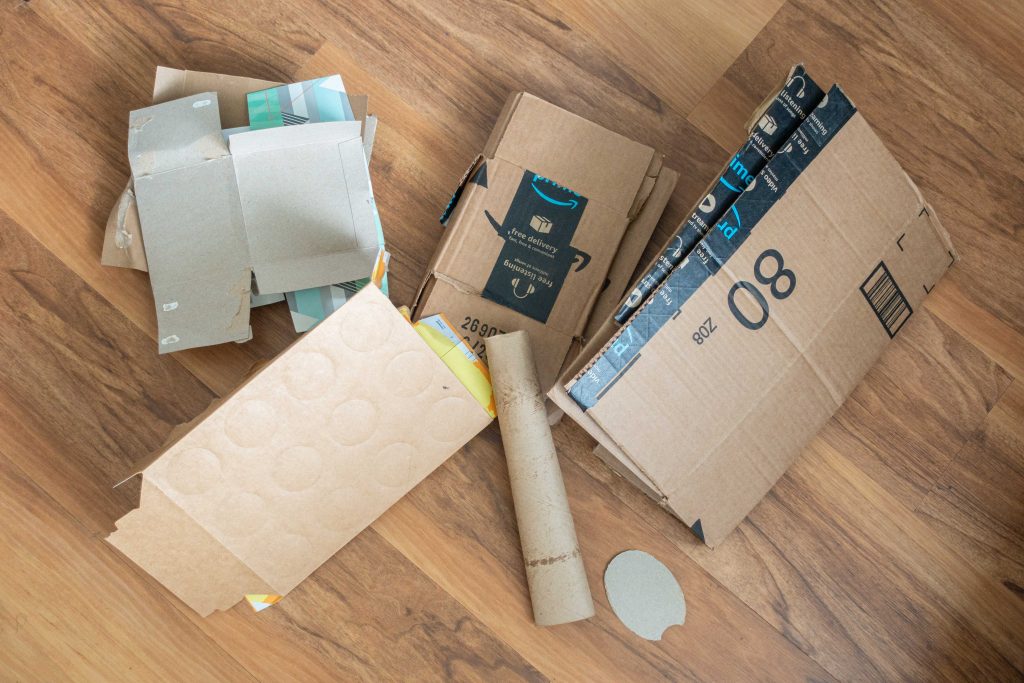
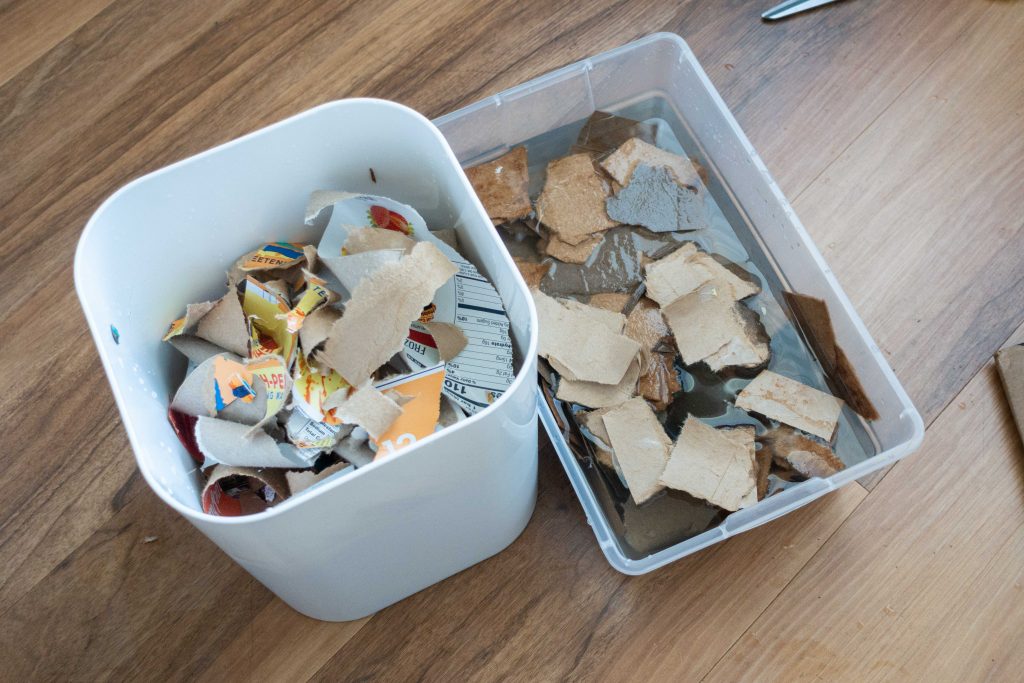
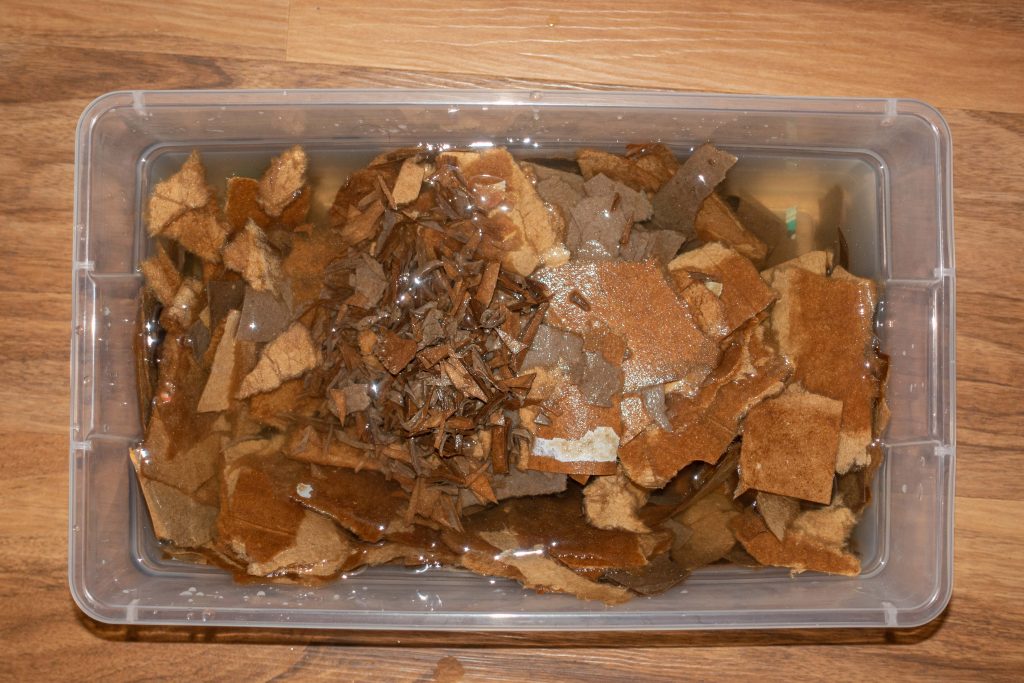
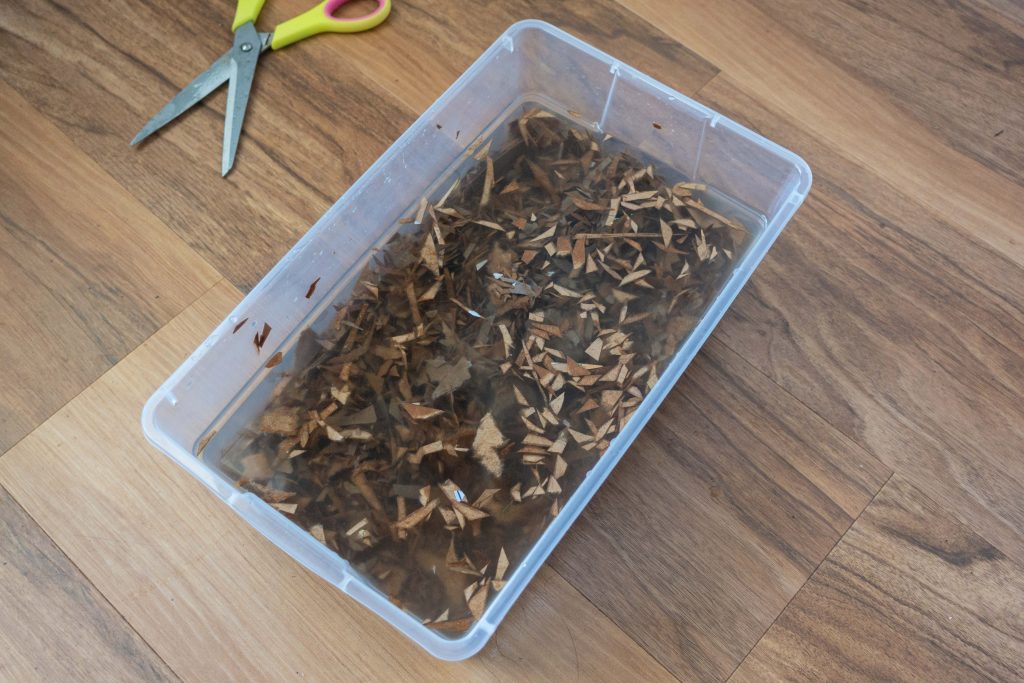
Taking this much soil resulted from a mole’s labor is a weird thing to do. The documentation footage of me taking soil directly from the land strangely reminds me of a quintessential modern industrial scene: large excavators working at construction sites. A traditional way of thinking around taking from natural resources, especially from the ground, is to say things like “gifts from nature” or “nature is human’s friend”. This human-centred view is an excuse for the possessive demand and consumption we have been engaging. When I think what I should do to give back to nature, I actually came to realize that the best I could do is to put the soil back to its original place.